|
As though you didn't already know! Just the word 'winter' conjures up feelings of chill, drab and drear! In the midst of July even though we are past the shortest day we are feeling the worst of winter's cold chill! Having said that, it's not so much the chilly 'bite' of winter which affects me - as the low light! Or lack of light which predominates when the days are shorter and the nights longer. The lack of light affects colour which becomes less defined, therefore dimmer - you could say no-colour. And under a dim light everything looks duller and drabber as colour is leeched from your familiar views of the garden - the views you see every day from your kitchen window. This dimness results in those familiar views looking more drab and colourless than at any other time of year and those colourless paling fences looking drearier and more mundane than ever - the look of mid-winter! Especially so if they haven't been camouflaged with climbing plants or other greenery. As if you hadn't already noticed - at this time of year - everything outside around us, and especially in the garden - reverts to a drab grayish brown - the sky, the trees, the reflections - so that the overall impression is colourless. Some like to argue that 'brown is a colour' and I would say it is more of a colour than gray but only marginally! It is towards the end of June - mid-winter - when the days are shortest and the nights longest that we are most deprived of light. Yet it still might not be the coldest we will feel, because although there might be some snow on the mountains - the Southern Alps, which are only 70 kms to the west of us, here in Christchurch, the snow can come and go. It is not till late July and August that a build up of many dumps of snow can spread, completely covering the Alps and settle. So here in Christchurch the degree of chill depends on when and how the snow arrives.
 But by midwinter there is nothing left on the climber above the pergola to the side of the cottage! No reminders of anything past, but only the tortuous vines and bare sterile looking branches of a naked Wisteria vine way up high above your head. This bare vine though looking useless and uninspiring in winter, is not there for nothing! Called 'Snowdrift', it is absolutely divine in late spring. You couldn't believe that those knotty little winter spurs would develop into long pure white racemes of flower in November which purifies and perfumes everything - inside and out. It's long white racemes hanging low so that they brush your face as you pass by. It may look well dead now, and utterly unpromising in it's nakedness, but I know it will spring into life in September. And until then I can visualise and watch the buds start to swell looking forward to the time - still a matter of months when they will eventually open up. In the meantime  there is lots to marvel at when I go walking in the ChristchurchBotanical Gardens, and one of those marvels is an area called the Maple Border. It is one of my favourite areas, as there is something to enjoy there all year round. As you can see from the photo above, the bare Maples are underplanted with a thick carpet of Hellebores - not special Hellebores or any of the wonderful new varieties which have been developed in recent years by clever hybridisers, but just Hellebores! And in such profusion! So the eye is drawn to ground level in winter as it shifts from looking up to the colourful foliage of Maples in autumn, to looking down to the ground beneath where we can appreciate the magic of Hellebores flowering in winter. In spite of the frosts and drear - there is still some colour, still some brave flowers which dare to poke through the ground and flower triumphantly in mid-winter. Even in my small garden! An autumn flowering Camellia for instance, not afraid of persisting into winter and dropping it's delicate pale petals all over the ground lights up damp paved areas so beautifully in mid winter. It's interesting - because the bright yellowish orange colour of this winter flowering Narcissus is something I might shy away from in spring or summer as gaudy and common - but in the dead of winter this bright colour says 'life'. It's a winter highlight, and it fills me with hope.  This is NOT my garden - oh no! This is the Chatham Islands in summer - but looking as though it might be winter with it's grey skies and wind sheared bushes. Yet it wasn't cold. Windy yes - but what else could you expect on remote islands all alone in the huge South Pacific ocean, hundreds of miles from any land mass. This is NOT my garden - oh no! This is the Chatham Islands in summer - but looking as though it might be winter with it's grey skies and wind sheared bushes. Yet it wasn't cold. Windy yes - but what else could you expect on remote islands all alone in the huge South Pacific ocean, hundreds of miles from any land mass. The Chathams are small, remote and lonely islands stranded all by themselves - out in the South Pacific ocean, hundreds of miles away from any landmass. New Zealand is probably their closest neighbour - 860 kms to the east of Christchurch. Whether winter or summer, there is not all that much difference in the climate, because at sea level these islands do not experience snow or frost - just the wind which is generated by ocean currents. There is not really a prevailing wind, rather it is a cool oceanic wind which comes from all directions - and blows a lot, exposed as they are in a huge ocean with no landmass to protect them. And that is the crux of the matter on these remote islands - that they are so far from anywhere! Yet they have a wind-blown fascination all of their own in their stark isolation. Most of the native flora of the Chatham Islands has been cut over to develop pasture for farming - the usual story - exploitation of natural resources for survival and profit. Although farming is one of the mainstays of the Chathams - it is only one! The survival of the Chathams and their flora is quite another story for another time.
3 Comments
GOING - GOING - EVEN TH0UGH IT'S THE MOST BRILLIANT SCARLET IN THE WORLD, WE KNOW THESE LEAVES ARE IN THEIR DYING THROES AND ON THE WAY OUT. This stunning red leafed vine is not to be confused with Virginia Creeper - Parthenocissus quinquefolia - a climber which sports bright red autumn foliage and hales - we presume - from Virginia in the good old U.S. of A! The climber pictured above with the red foliage above is not Virginia Creeper, but - to me the much more exotic vine - Vitis amurensis (Scarlet Grape). It is native to the area around the Amur river which forms the border in the far East between China and Siberia. Can you get much more exotic that that?? This vine has long been adopted by gardeners in the west, as it's larger grape like foliage is so decorative and changes to such a brilliant red in autumn. I am one of those smitten gardeners, who have given this ornamental Scarlet Grape the most important spot in the garden. It clambers and spreads itself along my front verandah, showing itself off to the street where it is often remarked upon by passersby throughout summer when it is green, and thought of as a fruiting grape. GONE! ALL OF THIS MAKES ME WONDER WHAT TREATS WE WILL HAVE TO LOOK FORWARD TO IN THE WINTER GARDEN?? Where was the Indian summer we so often get. Not this year - Summer came and went like a flash, and the leaves are falling already AUTUMN IS HERE The lovely weeds and grassy seedheads which I rely on to sparkle up my garden in summer are drying up and fading away already!! So early!! And the courtyard outside my kitchen and living room is already carpeted in golden leaves which have fallen from the Wisteria growing over the pergola above.
JUST A REMINDER OF WHAT SUMMER WAS LIKE WHEN WE HAD IT!!  We may not have the Flower Shows any more which boosted up our flagging garden enthusiasm in mid to late summer, after spring excitement was over. But we do have Wildflower meadows in Hagley Park and what a joy that is! It is right up there with the newest naturalistic trends in gardens, so our Council who initiated these lovely meadows must be congratulated for being so 'on to it'!!
I wish I had realised earlier rather than later that these meadows existed, as I would love to have followed the progress of the meadows from the outset. But I know now - and I shall be looking from this coming spring to see the meadows progress from small green mounds at ground level to their tall majestic floral beauty in their mid summer flowering glory. And then watching the beauty of decay as they fade away. It is. It is. It truly is!!! As I sit inside gazing through the window there seems to be no colour out there but brown! And grey!! Especially grey - grey sky, grey weather, grey garden How depressing it all looks, because even if there is green out there - it seems to take on the drabness of greyish brown, on these dreary, lifeless, windless Christchurch days in the low light of July. It's that lifeless pall in the air! You can't get away from it - it's everywhere! and no wind to blow it away! Why is it that in spring Christchurch gets - wind, wind wind - ad infinitum from every direction when we would so love a balmy calm windless day to enjoy spring blossom - but no!! It's all blown away by great dollops of wind coming from every direction! Yet in mid-winter when we really need a bit of wind to blow away the grey dreary freezing murk of mid winter - what do we get? ZILCH!! But there is hope, because from the photos I took in the Botanic Gardens earlier in this dreary July, things did look like quite colourful - floriferous even!! We can thank the winter flowering Kniphofia (Red Hot Poker) for that! Having said that, how many of us actually grow the striking winter flowering Red Hot Poker in our gardens? Not many of us, I fear! But I, for one, am toying with the idea for next winter because ..... Red hot pokers Kniphofia are such a welcome sight on a dull day in winter. And these exotic and striking plants from the eastern parts of Africa and Madagascar have transitioned to our temperate shores with ease. Appropriately named Kniphofia 'Winter Cheer', this variety pictured above certainly does cheer us up at this dreariest time of year. One of the nicest things about Kniphofia is that it obliges us by flowering in mid winter and then again in mid summer. The summer versions are a different story. But in mid winter, it is Kniphofia 'Winter Cheer' which takes centre stage as it is such a standout flower and so welcome in July when there is nothing much else around. Although native to South Africa, Knifophia does very well in New Zealand where in some warmer areas it has naturalised itself along road verges. It does really liven up a road trip in mid summer especially when growing in conjunction with Agapanthus which has sadly naturalised to noxious weed status particularly in more temperate northern areas of New Zealand. Because the summer version of Kniphofia so often appears in conjunction with Agapanthus it has proved to be a very naughty plant indeed. As they flaunt their vulgarity so blatantly that any hope of them integrating with our much less showy and more tasteful native species fades away. Instead of integrating they scream at our dear little natives!! How dare these blowsy showy foreigners upstage and take over from the authentic native roadside plants of our country! But don't forget there were no such thing as roadside native plantings back in the day before we arrived. Because there were no roads! Roads came with us - the foreigners to this land!! We can wring our hands in worry and chagrin that even our roadsides are being swamped by these gaudy foreign devils. But will it help? Sadly it would be all in vain to keep wringing our hands in misery - we must just grin and bear it!! And why not make the most of it by actually enjoying these impolite ring-ins and realise that this colorful combination can liven up many a journey in midsummer. It's really a pleasure to be overwhelmed with these flamboyant botanical runaways particularly when you encounter them on the long straight boring roads of Canterbury flourishing in such tawdry confidence along our roadsides on a mid-summer road trip. Red Hot Poker teams up with Agapanthus so effortlessly, as though it has just landed there to sparkle up your life, as you drive along our country roads. Even though native plant purists might wring their hands in despair, the rest of us can enjoy and admire this picture which has taken to our roadsides with such reckless abandon. We had better enjoy this picture while we can though, as the plant purists will want to root them out asap! If they can - as they will not be easy to root out which will anger the plant purists even more!!
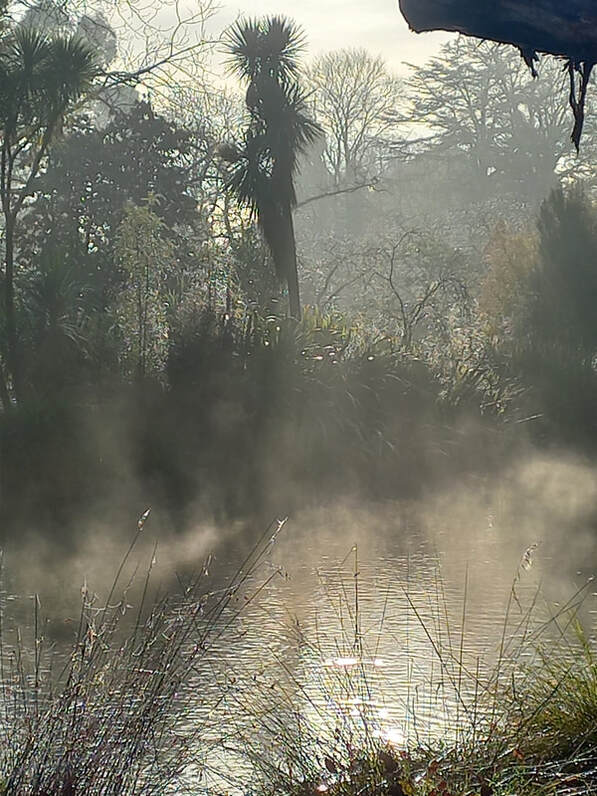 Even though July, is a grey, drab, cold and really dis-spiriting month for gardening in Christchurch, and is everything that the phrase mid-July' conjures up in the midwinter minds of southern hemisphere gardeners - cold dank earth, icy, shivering. But in the northern hemisphere, all is colour and light in July because it is mid summer! But at the bottom of the world, July is full of cold damp mists rising from the river, the stark nudity of bare branches silhouetted against the white fog, sloshy muddy tracks, filthy shoes and no relief from chill until one day - the sun comes out! And slants across the river even as the mists rise.
And then there were Hellebores! And today we are out of July and into August My third son Matthew was born on the 1st August, so it is a month of joy and hope for me!
Who would have thought that the spectacular but humble Ornamental Grape had such exotic beginnings! This is one of the lovely things about gardens and the plants we like to cultivate in them - they can come from all over the world and here they are flourishing away at the bottom of the world, in the opposite season to where they came from - happy as Larry!
THE END OF SUMMER
The weeds which make themselves at home in my garden seem to know what they are doing - and are very discriminating. However they do come up in droves over the garden in springtime and when they are still small I do have to decide which ones to pluck out and which ones to leave, so I admit I do have some say. The best weeds have names. This is not strictly a weed, although it's a very easy to grow perennial which spreads easily and can pop up anywhere. It has yellow flowers throughout summer which grow in whorls up the stem of the plant and which develop into these attractive brown seedheads which will last throughout winter. It's these distinctive seedheads which make it worth growing even though it's a strong grower and could be a bit of a spreader, perhaps making it a little difficult to dig out when you no longer want so much of it. I photographed this lovely patch of weeds on an empty section which had once been home to a commercial premises along a main road near my house. It is next door to a service station and 2 years later the weed patch alongside the same service station is still there!! And still fenced off by the same chain link fencing. - I have been expecting an architectural horror to go up on that weedy site any day, but no - not yet! There is no way this area is accessible to enter in order to photograph the weeds, as the chain link fencing is inviolable. So the only way to get a good photo of this quite lovely patch of weeds is to point and shoot with the phone/camera between the links in the fencing, which means that by somehow wedging my phone between the metal links, I have managed to photograph this impressive weed patch as best as possible. It's truly a wonder that some developer hasn't built a cheap and nasty building there. A pretty field of weeds as seen through chain link fencing. One of my very favourite weeds is the annual 'Orach'. Because it can be so decorative I tend to allow it fairly free rein in my garden - you can see why! It is so decorative and a stunning colour. It's problem is that it seeds absolutely everywhere and comes up in droves every spring. The only consolation being that because it comes up so thickly it is very easy to pull out in great clumps leaving just what you want to add colour and interest to the garden 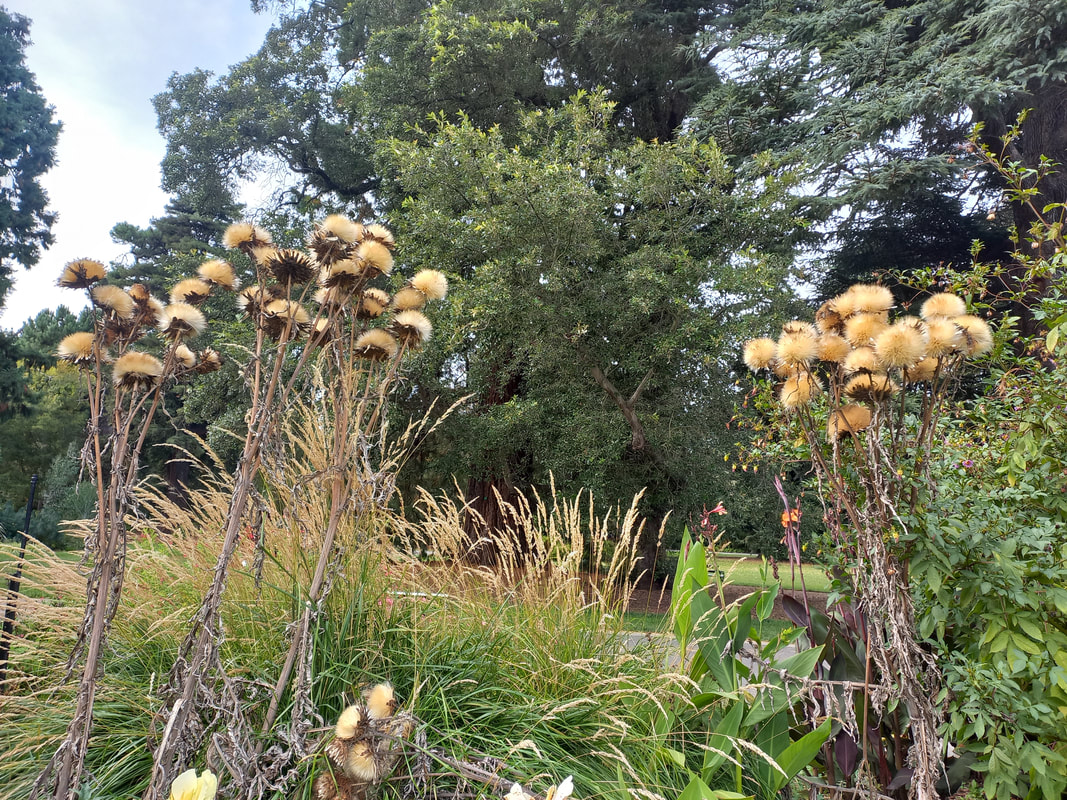 And when more grassy seedheads are joined by flyaway thistle seedheads, taking the place of flowers we know for sure there is not long to go before it is all over!!
IT WAS EXACTLY 6 MONTHS AGO THAT THIS WAS THE VIEW FROM MY WINDOW? 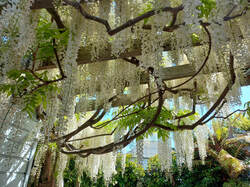 This impressive white Wisteria is a stayer called 'Snow Showers'. It is the very last of the season to flower heralding the end of spring. Saying goodbye-bye spring/hello summer, it's white petals drop all over my bricked courtyard garden just as the early roses start to flower!! Not to be outdone, this mauve flowered Rhododendron ponticum is also one of the last species to flower. One of springs greatest species in it's infinite varieties, sizes and styles, it is mostly native to the region of the Himalayas - and Asia, although there are some to be found in North America. But this common variety, R. ponticum has become invasive in parts of Scotland and North America becoming a nuiscance. Even here in the Christchurch Botanic Gardens, R. ponticum has spread very easily in certain areas where branches droop and root into the ground creating their own mini woodland. Yet there is a sculptural quality to their trunks and branches, and their fallen petals create a stunning mauve carpet as they die away, which certainly tells us spring is about to depart. A carpet more beautiful on the ground than on the bush, they announce that SUMMER IS A COMIN' IN  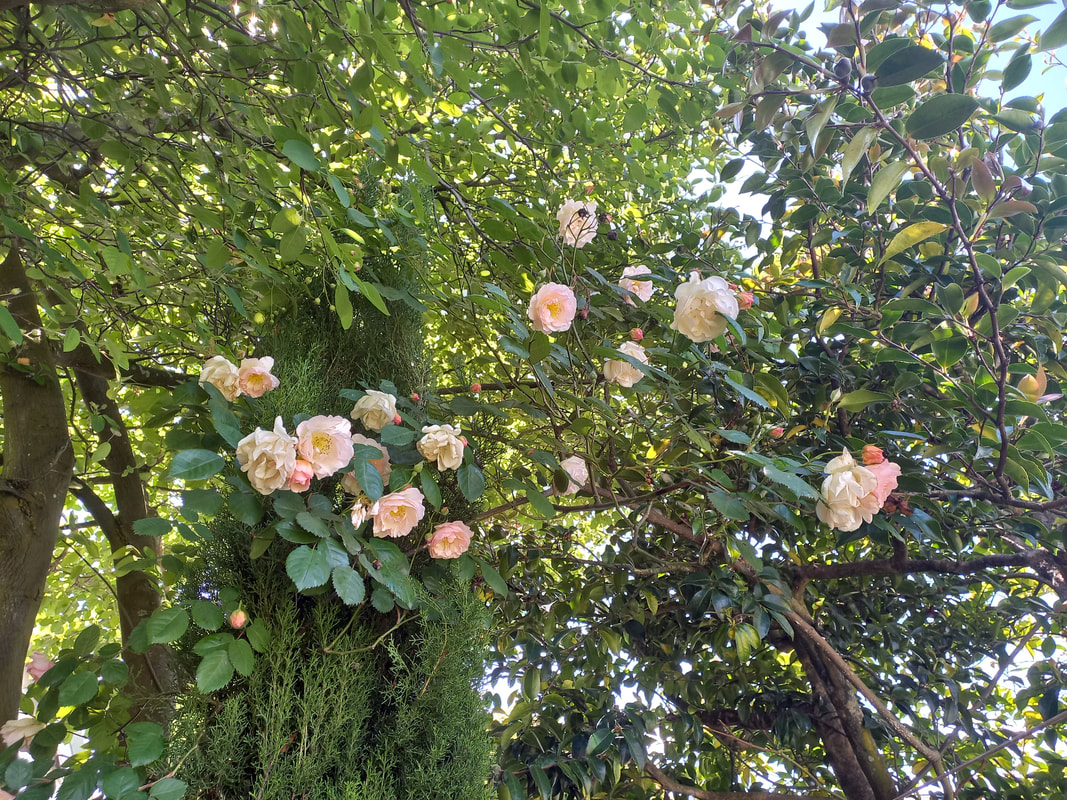 Hybrid Musk Rose - 'Penelope' Hybrid Musk Rose - 'Penelope' AND THERE IS NOTHING THAT SAYS SUMMER QUITE LIKE ROSES! suddenly pink is everywhere - many shades of pink!! From the gaudiest of cerise pink to the softest pale china pink in hundreds of types and varieties. So many that we can't possibly know the names of them all - and I certainly don't! But I do know the name of the first rose of the season to flower in my garden! It is 'Penelope' (see above) which flowers early and in profusion - a soft apricot pink in the bud opening to cream with pink edged petals. It is a hardy hybrid musk rose, which can be trimmed as a bush - preferably a large shrub, or allowed to climb if it has somewhere to climb to. In my garden it started off as a bush, but then gradually crept up a nearby Camellia sasanqua shrub. And why not - Sasanqua Camellias are evergreen and tough, and can cope with roses climbing up through them flowering away in summer while the host bush itself is leafy green. C.sasanqua has it's own moment of glory when it flowers in late winter/early spring. So when you allow a rose to clamber up through this tough evergreen shrub in summer, you get a double whammy! Then there are those gaudy pink blooms which some of us must learn to love AND THE PALEST OF ROMANTIC BEAUTIES which you can't help loving despite yourself
THE SIMPLICITY OF THE OLD ROSE GONE MODERN The simplest form of Wild rose consisting of only five petals can be also quite diverse in colour and form. They originate in the northern hemisphere from Europe to Asia to North America. But in recent years breeders have shown a lot of interest in Rosa persica, a species which is native to the countries of Central Asia and western China, and which I have been lucky enough to see myself growing in the wild in Iran. They are the simplest form of wild rose, and are distinguished not so much by form as by colour. Other single 5 petalled roses often called dog roses originate in Western Europe and are usually white or pale in colour unlike Rosa persica which originates in eastern Europe and Asia and which is bright yellow, red or even orange in colour, often with a splash of darker colour around the stamens.
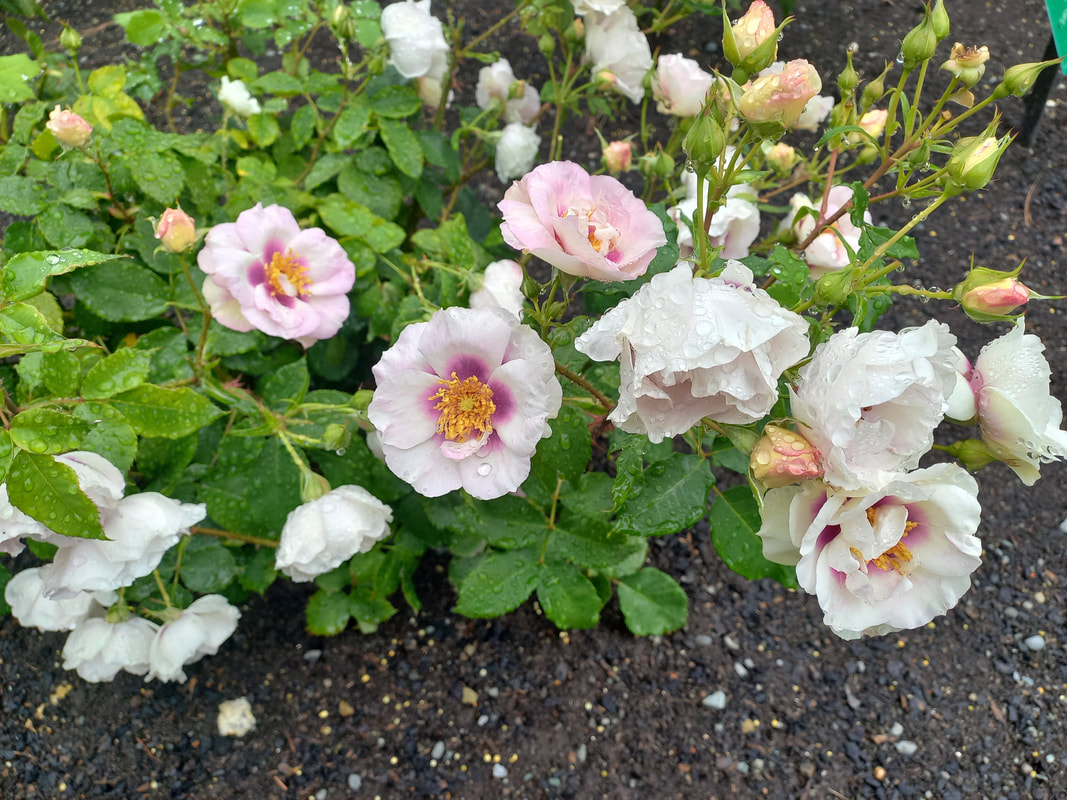 'Eyes for You' 'Eyes for You' It is easy to become ho-hum about yet another new introduction to the rose world, as there seem to be infinite varieties out there which just keep coming, but these latest introductions have made me sit up and take notice! I am hooked on the simple form of the latest 'eyes' varieties with the blotch around the eye and would recommend them for any garden. By early October there is nothing tentative about spring - it is breaking out all over 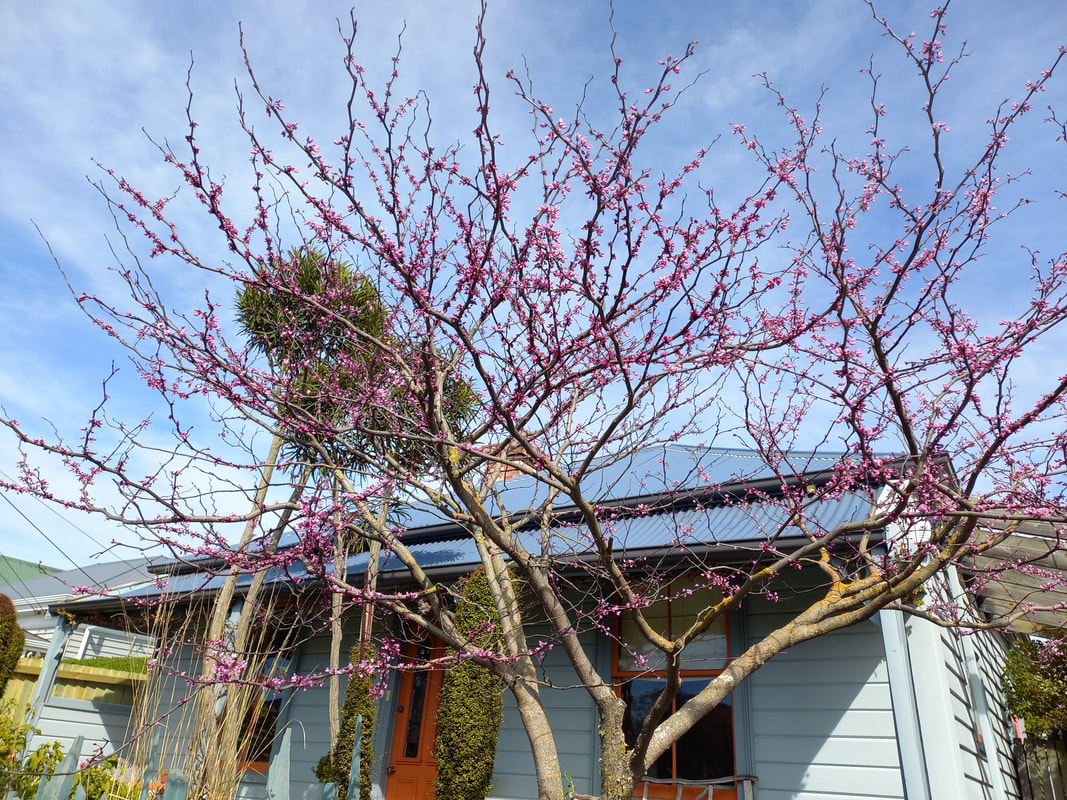 Cercis canadensis 'Forest Pansy' Cercis canadensis 'Forest Pansy' And yet while these magenta buds do sit on the bare branches as does plum and prunus blossom, they are not really pale and pretty like earlier Prunus blossom. They are rather brash, in a dainty kind of way. Of course they are of North American origin, and not shyly Asian as is earlier spring blossom. And it is that very brashness which means it can vie happily with my orange front door and window frames. Magenta and orange - a colour combination which sounds too horrible to be true, yet can work if you flaunt it bravely. And this is exactly what the front garden looks like today! For many years, I have always planted 'Temples Favourite' which is what I consider the best of orange tulips - for my garden anyway - as they have long stems so sit up above the grasses. I have tried many other orange varieties with 'Temples Favourite' at different times, but they have never been so successful with and tend to become dwarfed by the grasses which 'Temples Favourite' never does. BUT NOW IT IS EARLY NOVEMBER - I HAVE BEEN TO SYDNEY AND THERE IS A WHOLE DIFFERENT STORY TO TELL
By August we are just hanging out for something gorgeous, fresh and preferably 'pink' to appear in our gardens after the drabness of winter brown and grey which feels as though it's been going on forever. So I've been trawling around in my garden, looking for some early treats - see below what I have found! 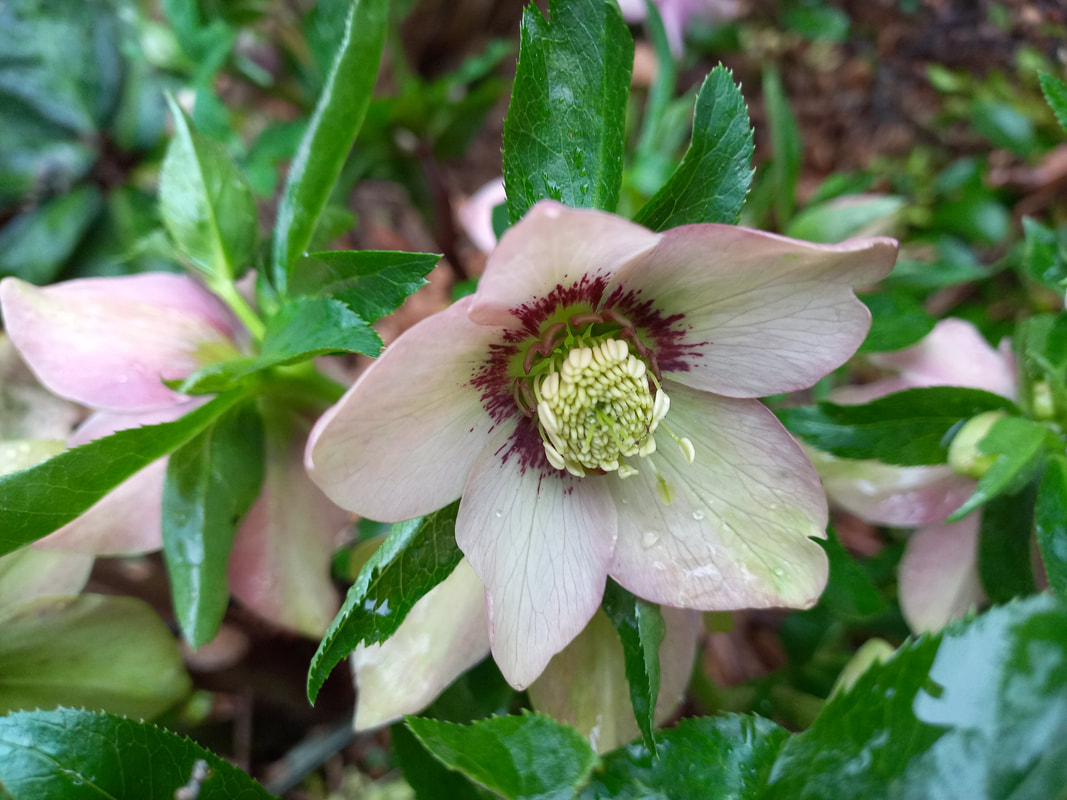 HELLEBORES ARE IT even though their pink can be quite muted. But aren't they the flower of winter? Or should we say late winter/early spring. Mine don't start to flower till July, but other cleverer gardeners seem to get them flowering much earlier. And broad beans are IT too! Especially the ones that have these delightfully cerise flowers!! They are called 'Hughey' as they were especially selected and raised by Denis Hughes, right here in the South Island almost locally at Blue Mountain Nurseries, in Tapanui, Southland. And if you sow the seed in the autumn you are rewarded with this bonus at the very dreariest time of year! Surprise! Surprise! These very special seeds are available from - of all places - The Warehouse!! Back to the ornamentals - as though 'Hughey' wasn't ornamental enough!! It certainly is! But we are more accustomed to noticing those very early Camellias, and the ones that appeal to me most in my garden, are the simplicity of the early single variety's. But every now and again, one hankers after the creme de la creme of Hellebores - a special named variety - something rare unusual and rather grand in Helleborus terms. I do have one from the special Living Fashion Designer Series called 'Anna's Red'. Which quite by accident happens to look good clustered around a red flax! An example of unlikely bedfellows hitting it off! 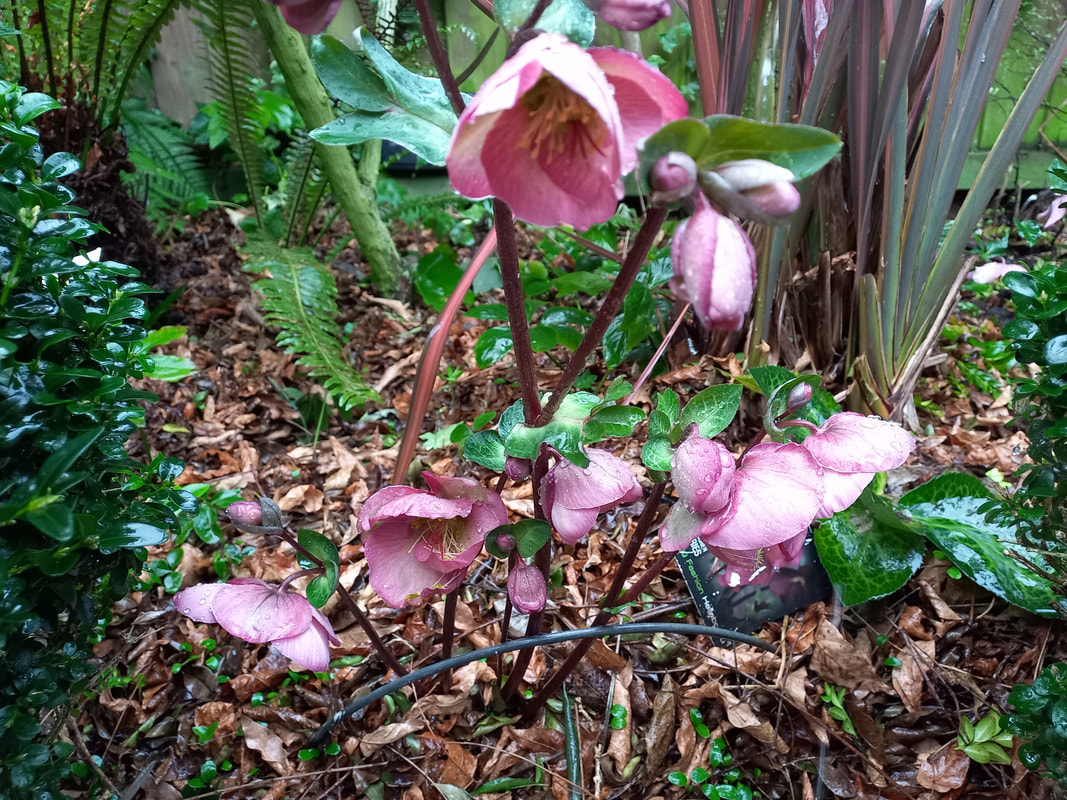 Helleborus 'Anna's Red' from the Living Fashion Designer Series Helleborus 'Anna's Red' from the Living Fashion Designer Series You can't talk about late winter without mentioning 'Snowdrops'! And mine are modest compared to most. Even though I do not have a big enough garden with space to allow Snowdrops to spread into wonderful drifts where they can naturalise, I can still satisfy my Snowdrop mania with a few clumps of them in a garden bed or 2 within my urban garden. Any gardener worth their salt, would want to finish the winter with Snowdrops!
WHEN THE SKIES ARE GREY, THE WATER IS GREY AND EVEN THE THE TREES ARE GREY, IS THERE ANYTHING OUT THERE THAT MIGHT CHEER US UP? 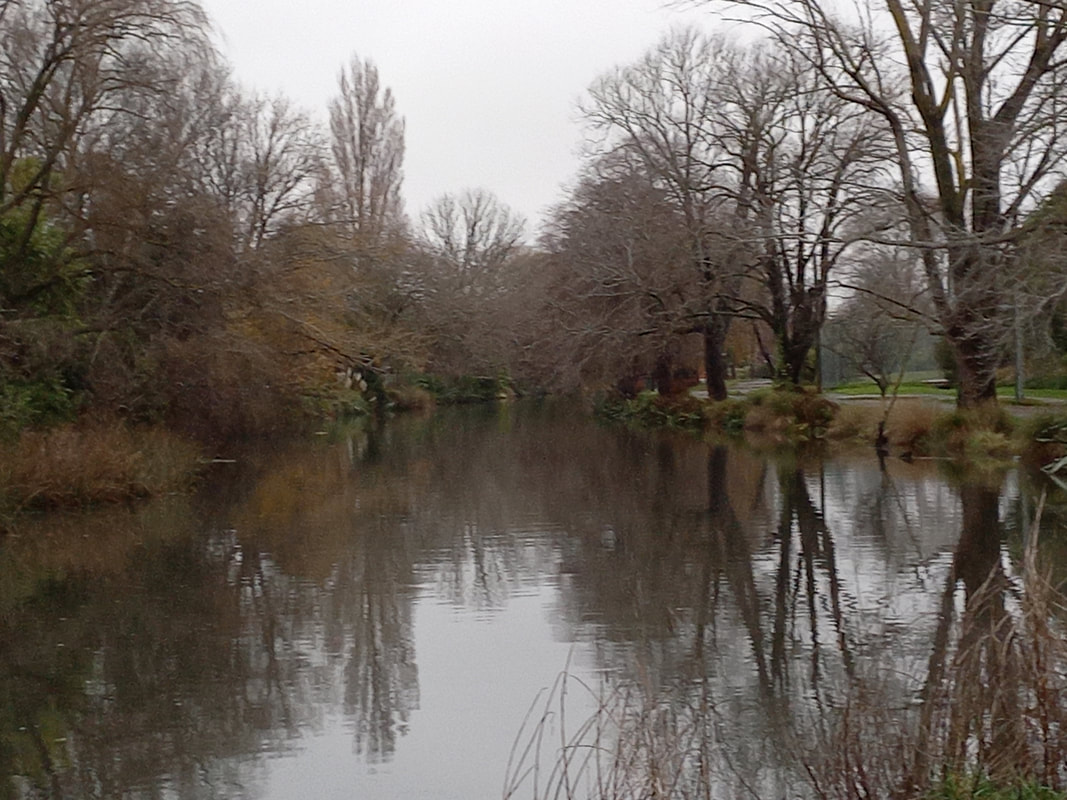 Would it better if everything was white as in the northern hemisphere winter? This is something I wonder every winter. Of course there is plenty of snow in the mountains if you can get there! That pure clean white environment can lift your spirits, like the mucky grey down below never could. Make any wonder skiers can't get up there quickly enough. But sadly, we are very seldom a complete white blanket as in Scandinavia or Russia or North America. Would the pure bright freezing white of winter in those northern countries be more uplifting than the sombre grey of a cloudy winter day here in the South Island of New Zealand? Instead, we put up with the depressing and chilly greyness of life in a Christchurch winter, hoping for the sun to shine. And of course it does. Eventually! In between the greyness we do get crisp bright sunlight after frosty mornings - sometimes. WE JUST DON'T GET THE WHITE PURITY OF SNOW! We don't have the drama of snow but there are reflections - even if they, too, are grey Dried brown winter leaves and detritus can look positively sparkling against grey water in a grey gutter. If you are lucky there might be a puddle as well, which can reflect - even if it is only of the grey sky and bare branches above. Magically grey sky can look blue when reflected in puddles! Especially when contrasted with brown dried leaves which in comparison can sparkle!
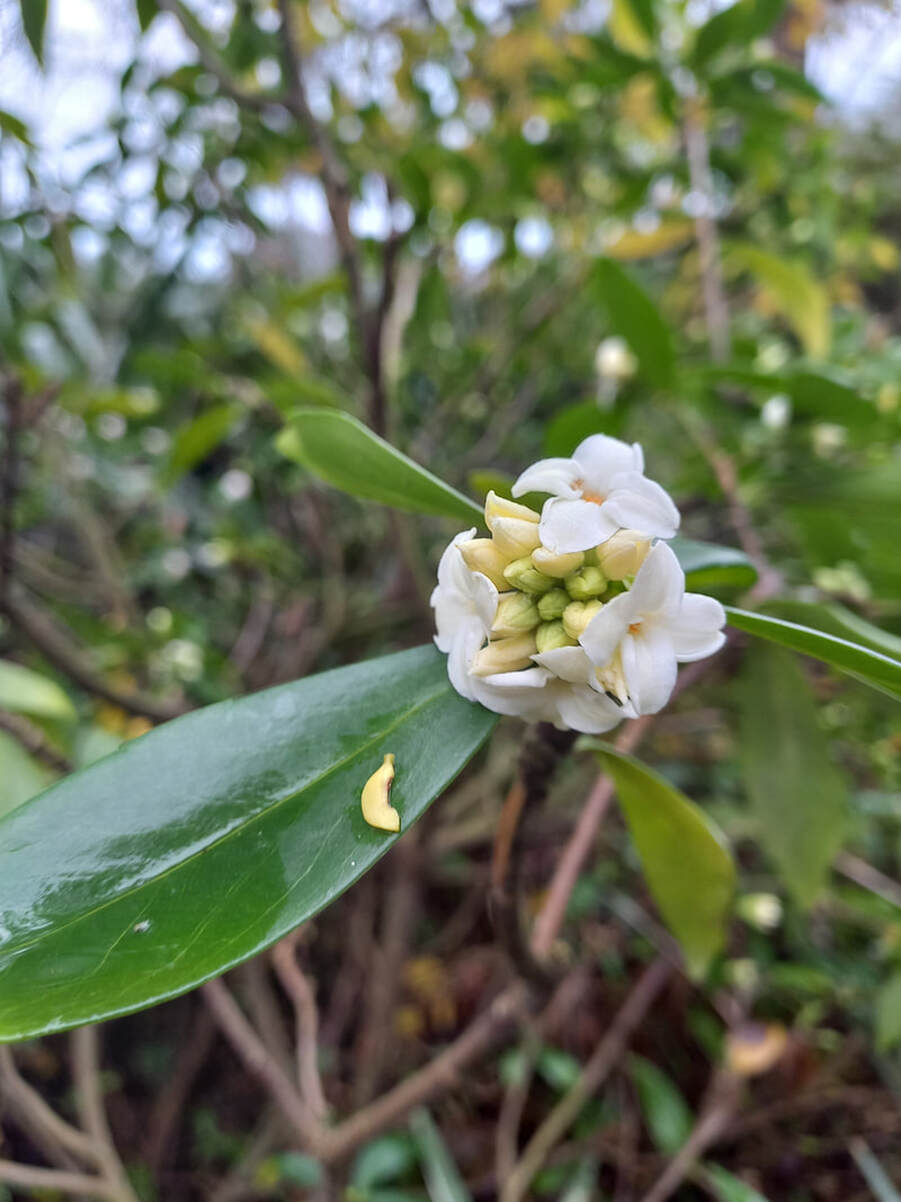 Daphne odora 'Alba' Daphne odora 'Alba' Most gardeners know about Daphne odora, that smallish evergreen shrub which drenches the late winter garden with such a delicious scent. We usually associate Daphne with a pinkish burgundy flower, but it is this is Daphne odora 'Alba', the pure white version which I can't resist as it heralds the new season with such perfection and honesty, flowering in July and filling the air with it's heady perfume.
I lust after a Daphne bush for my garden, but it doesn't like me! I have planted several and they always expire. I have tried growing it in acid loving areas, in neutral areas, even in limey areas, but no matter what I do - it expires! For me, it's just like falling in love with the one who doesn't love you back! |
Details
Archives
July 2023
Categories |



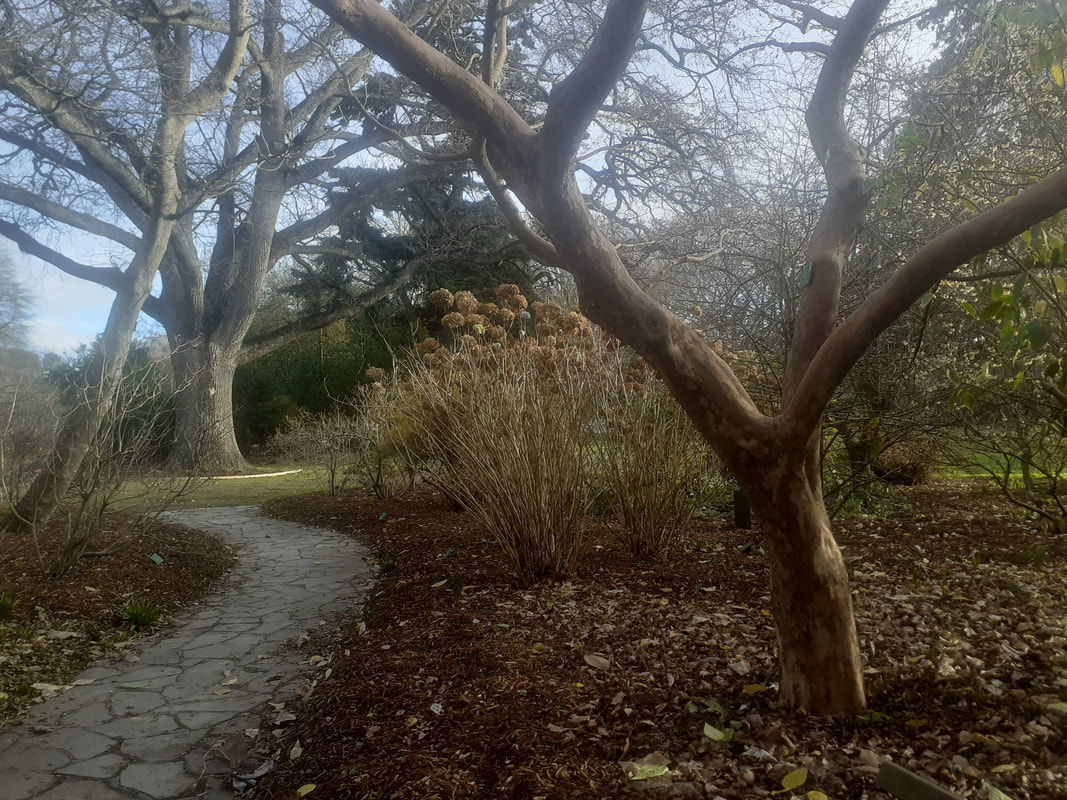














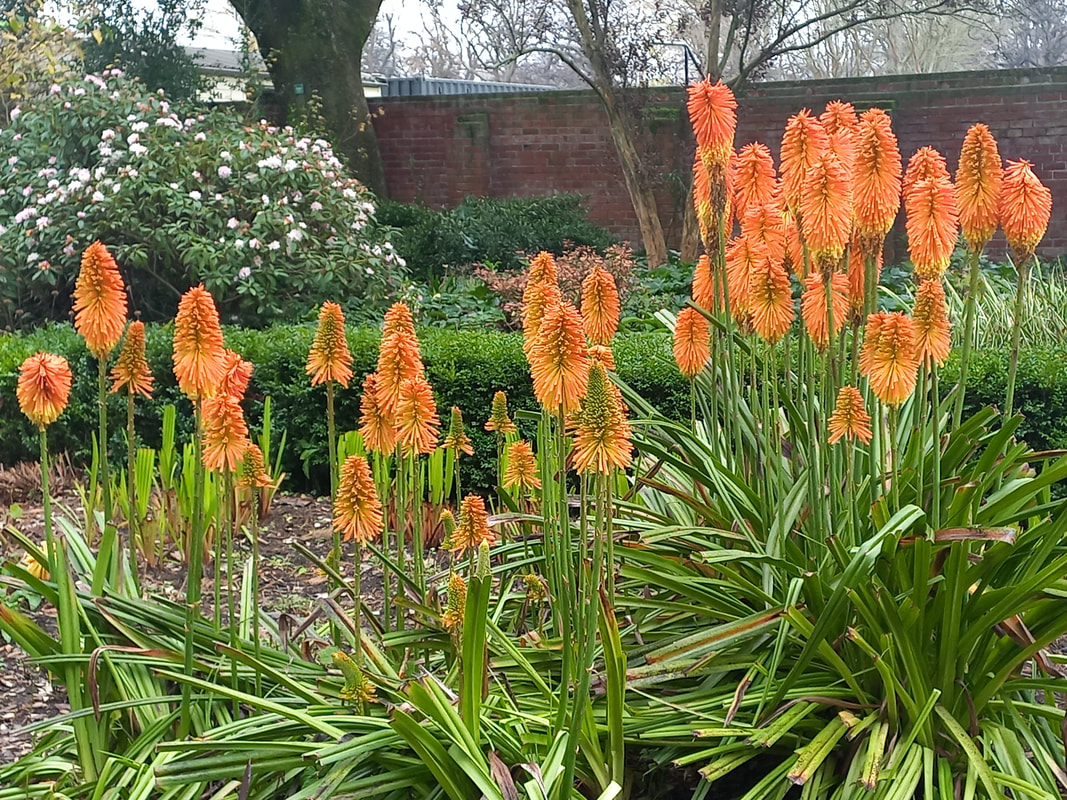
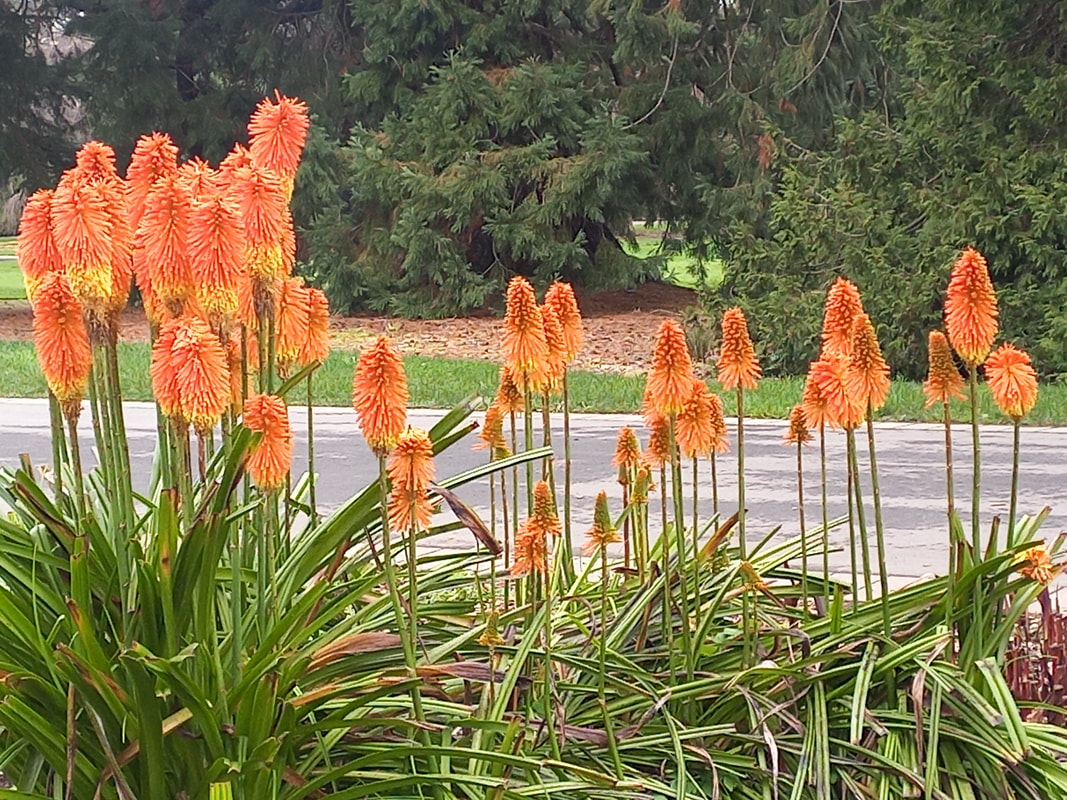
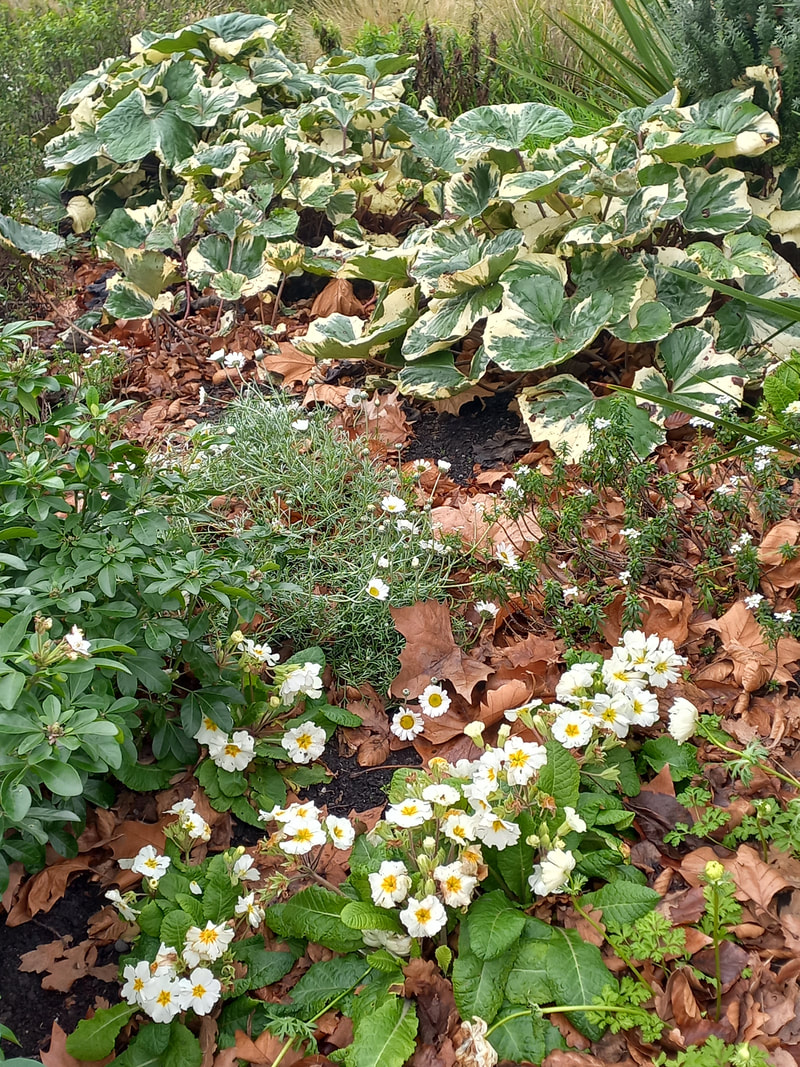
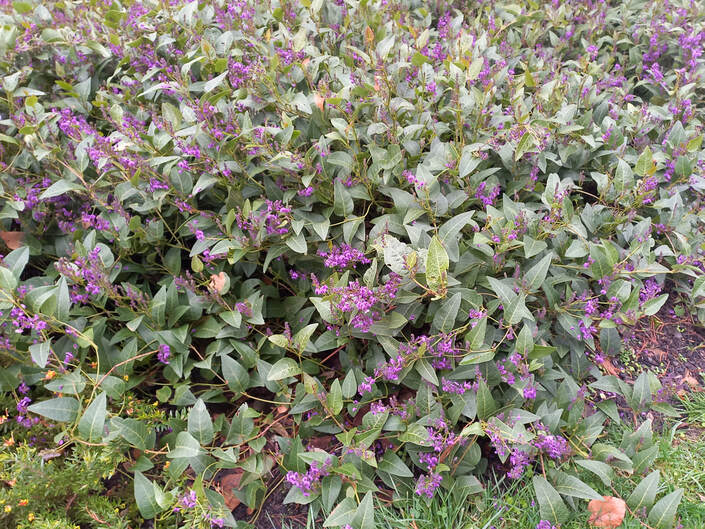
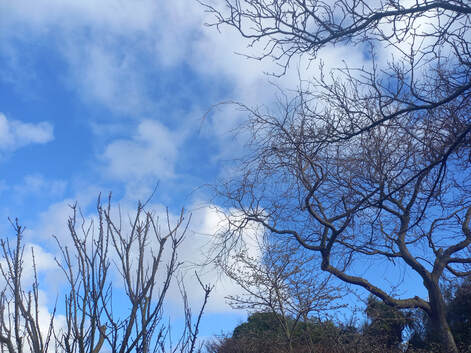
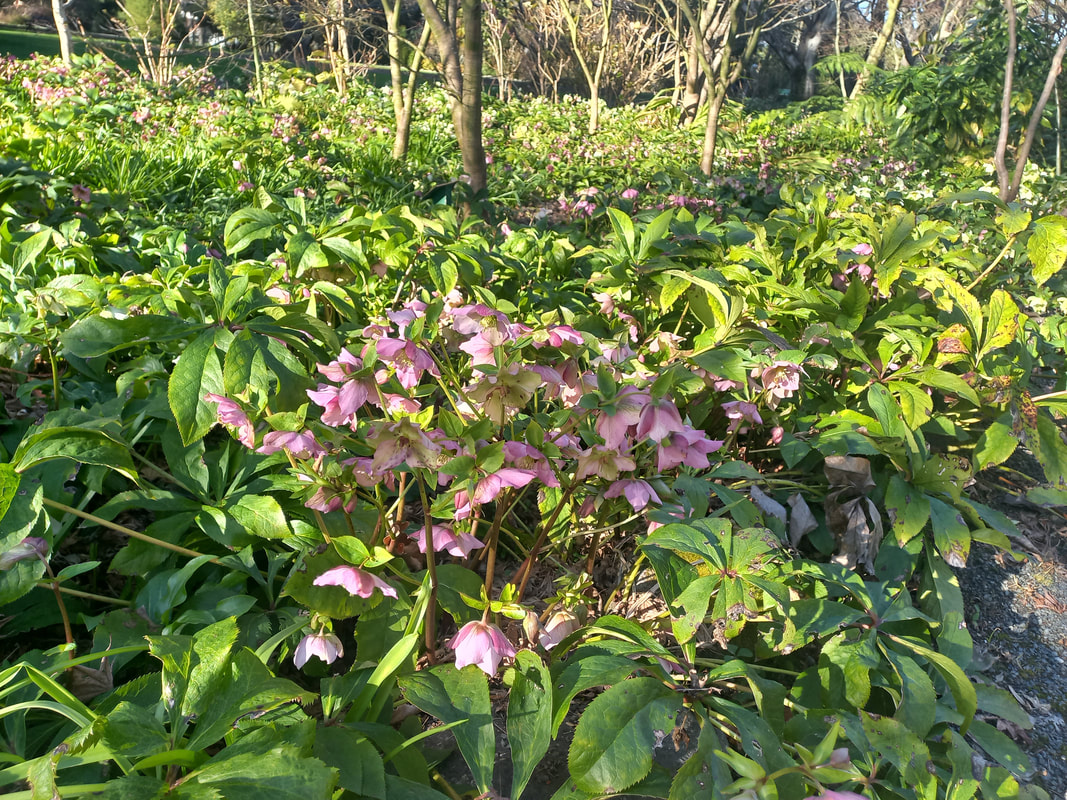
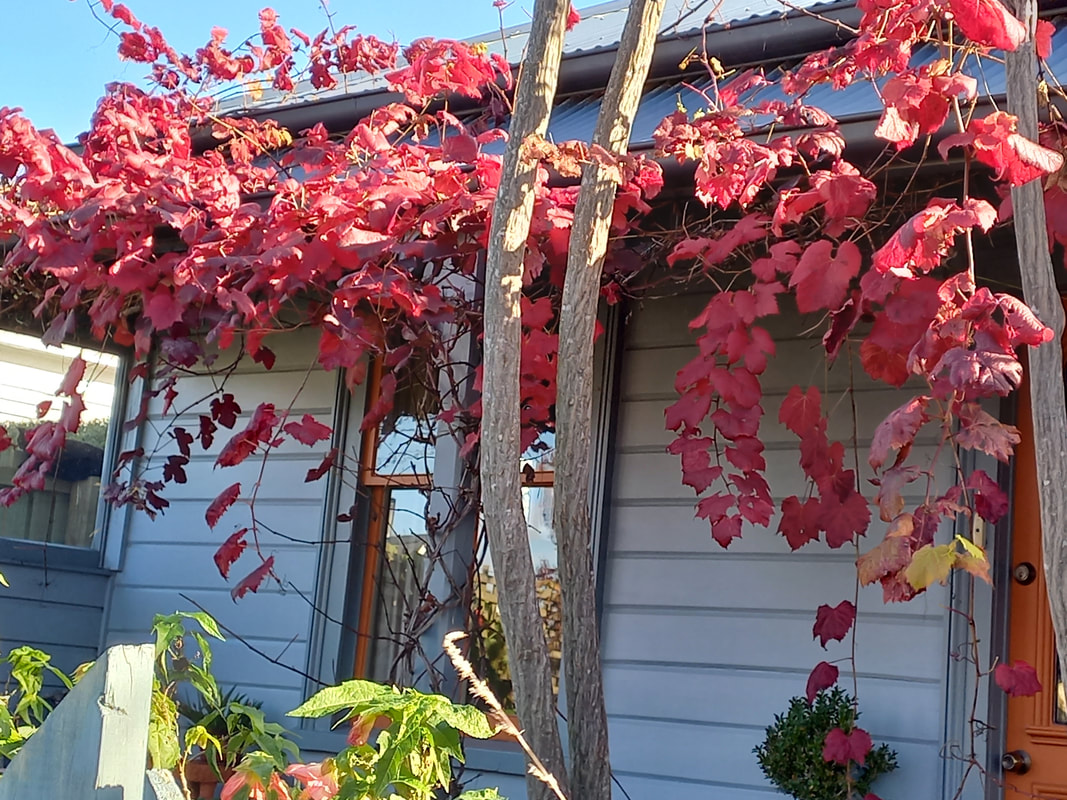
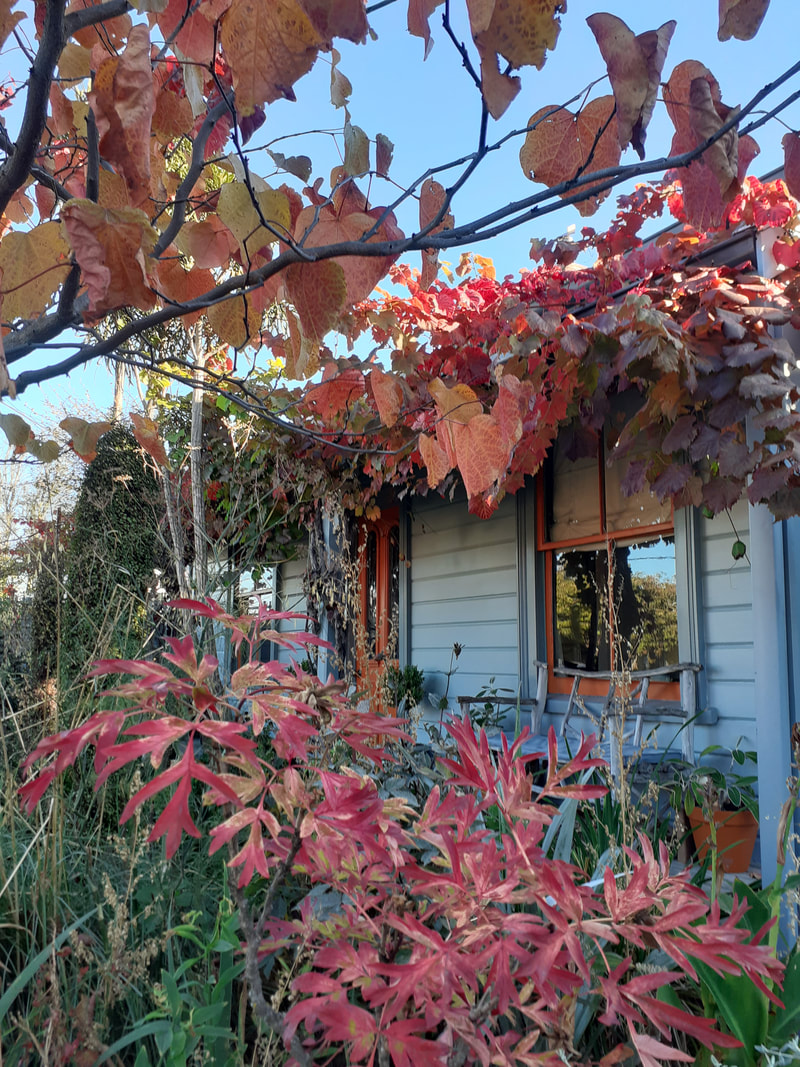
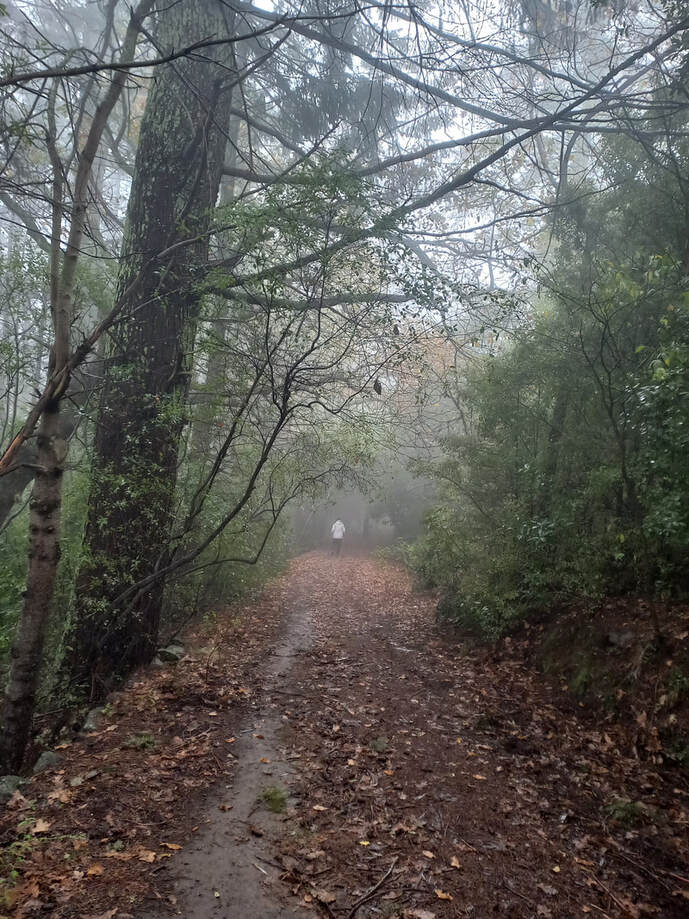
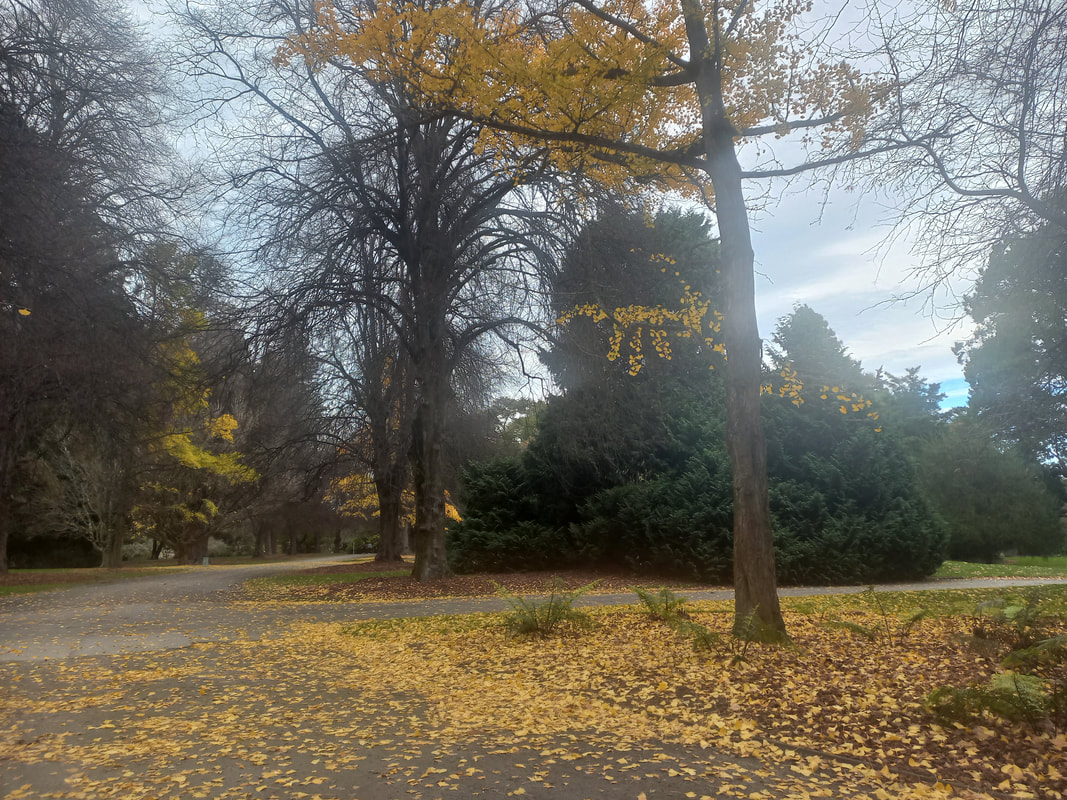
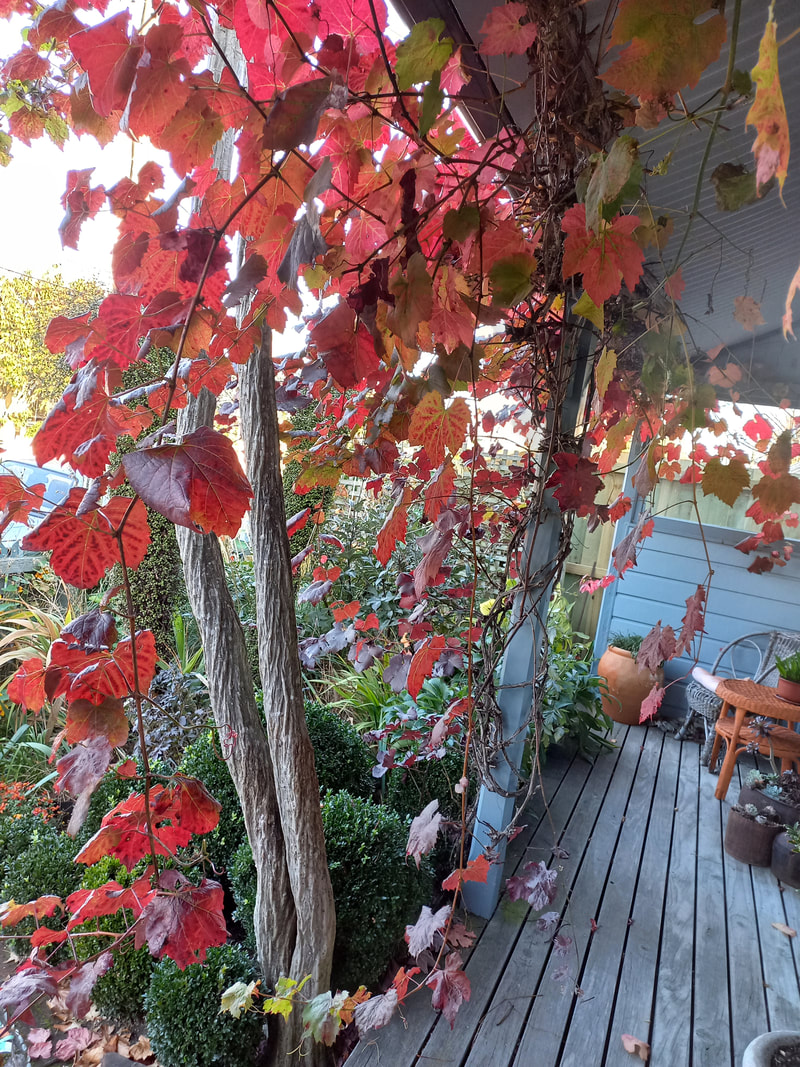

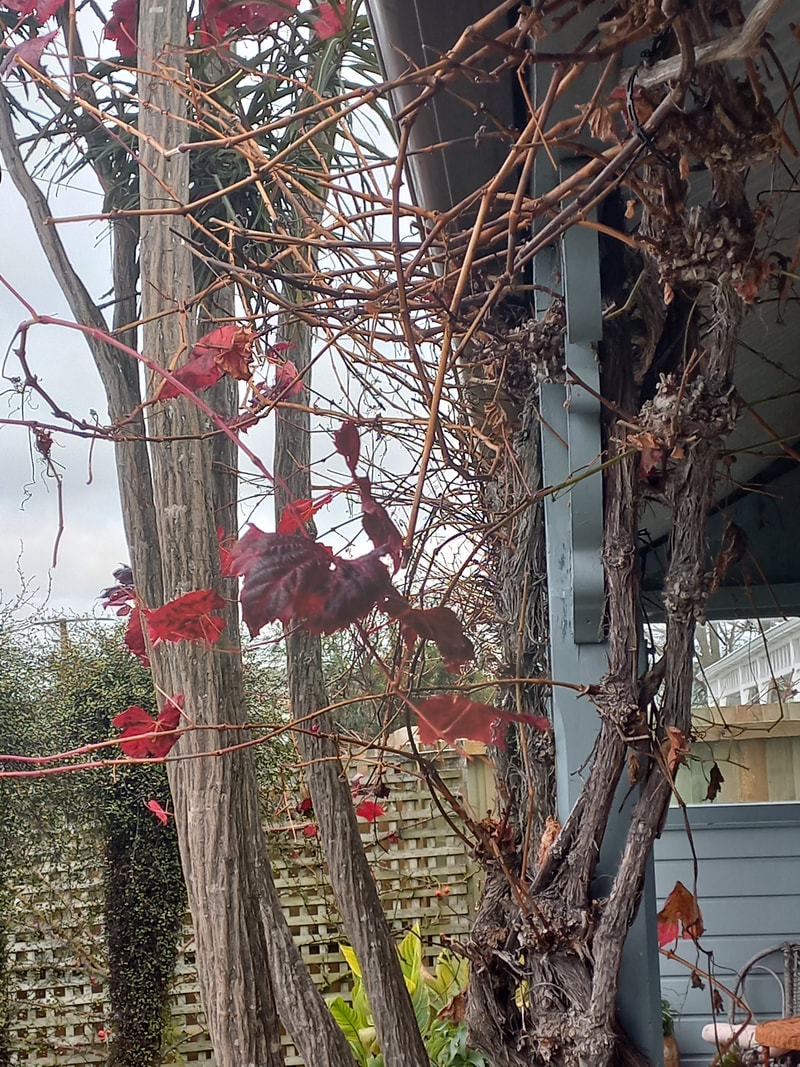
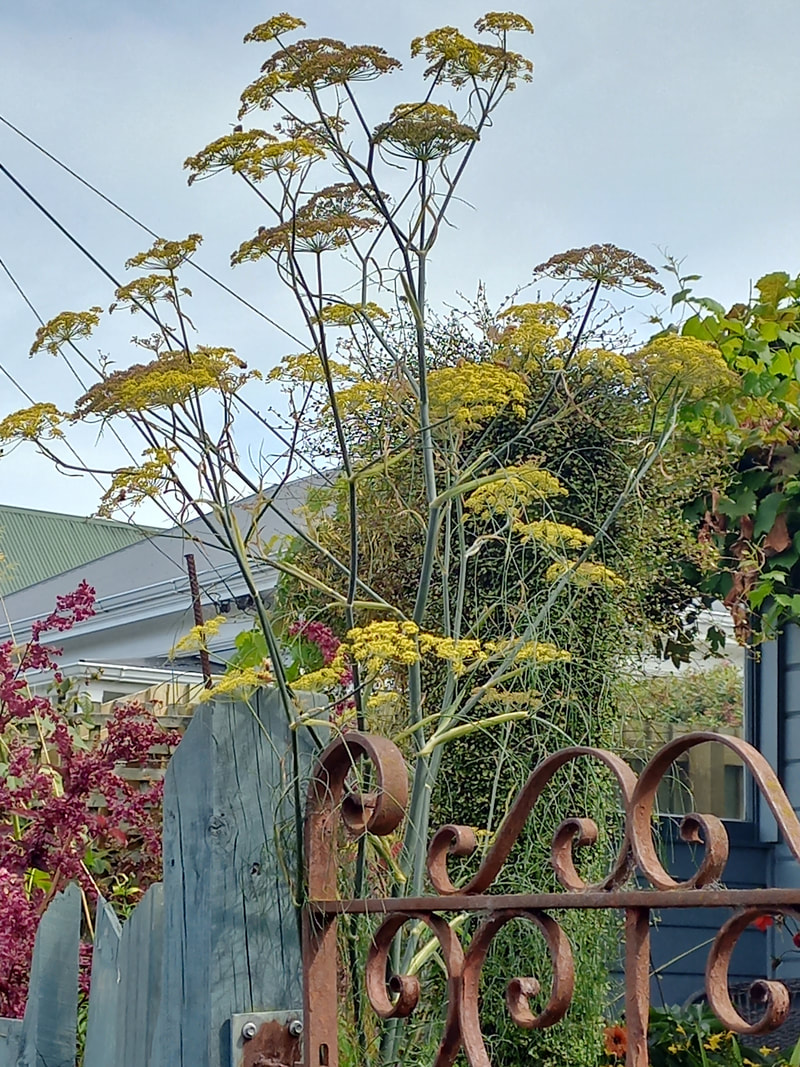

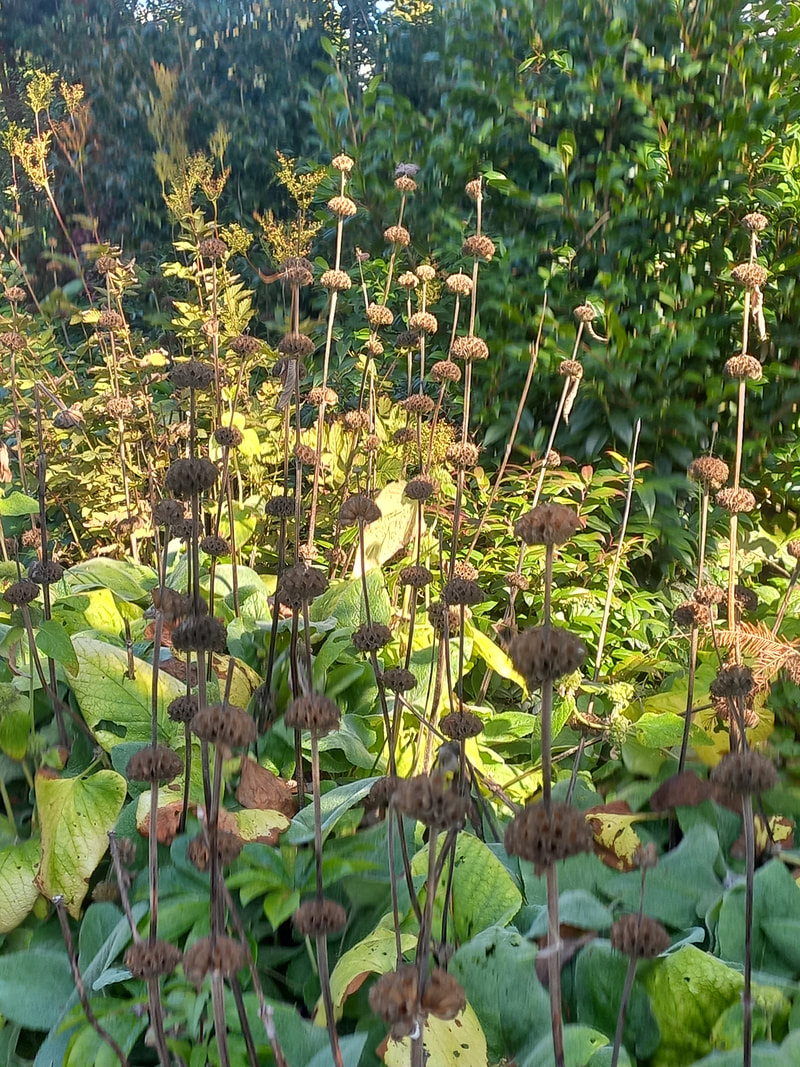
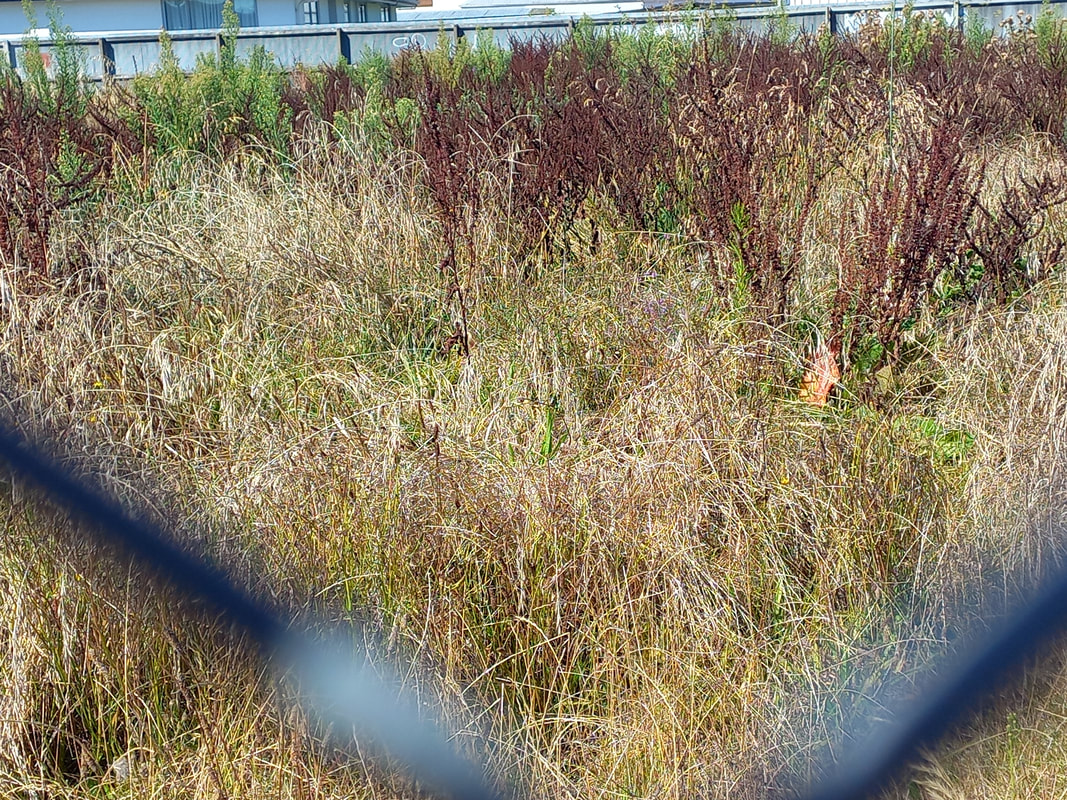
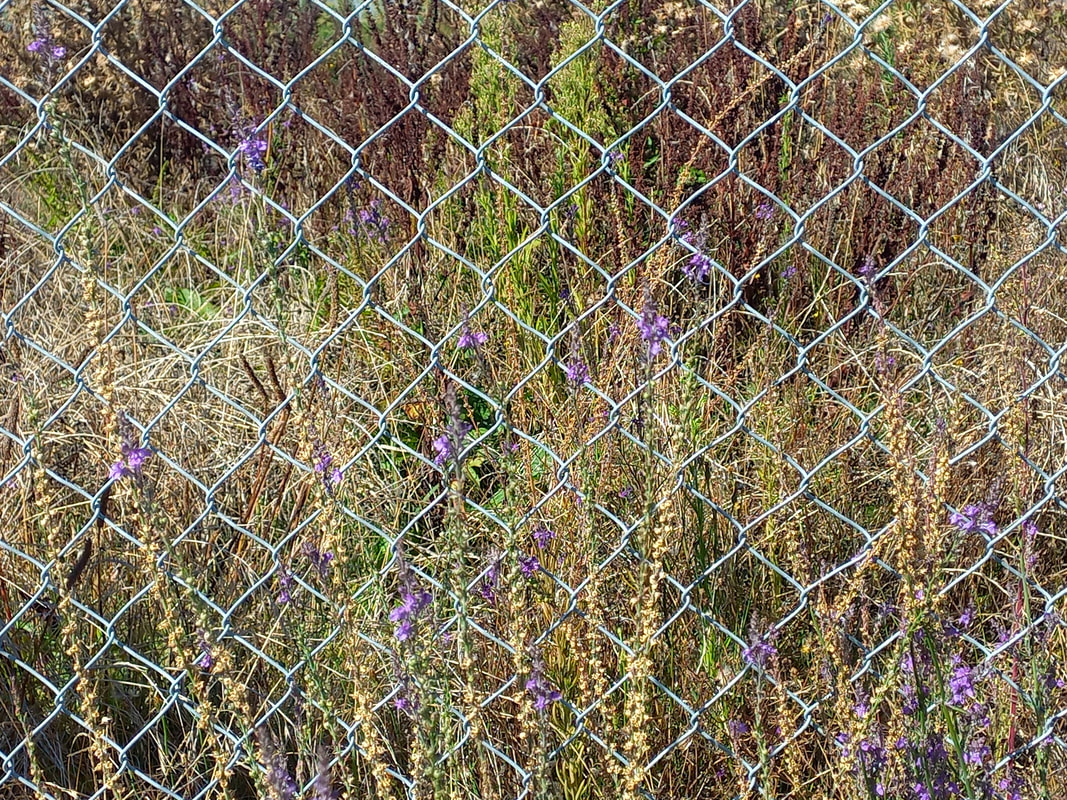
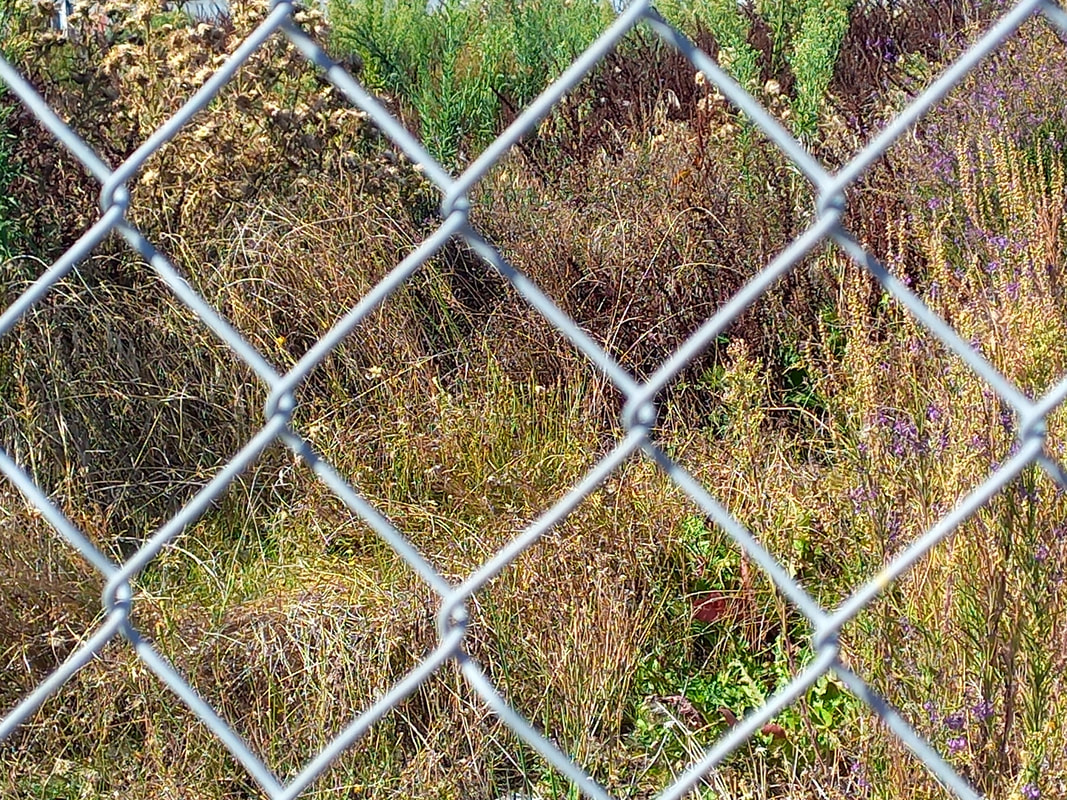
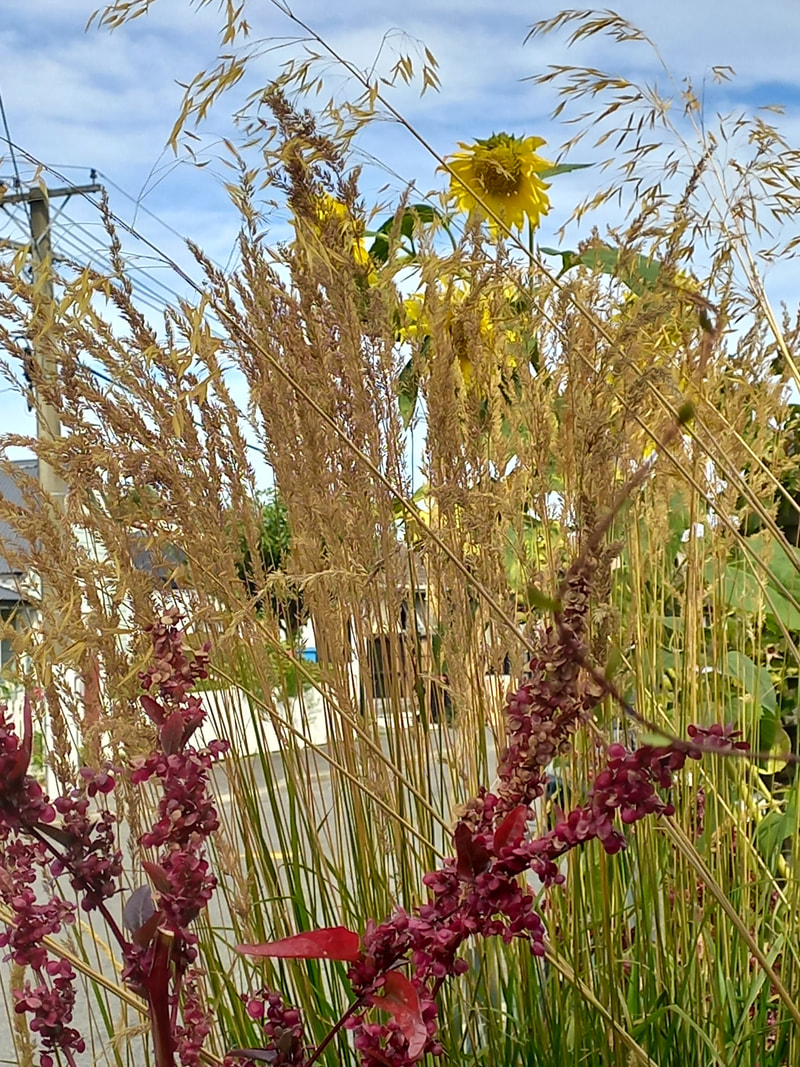
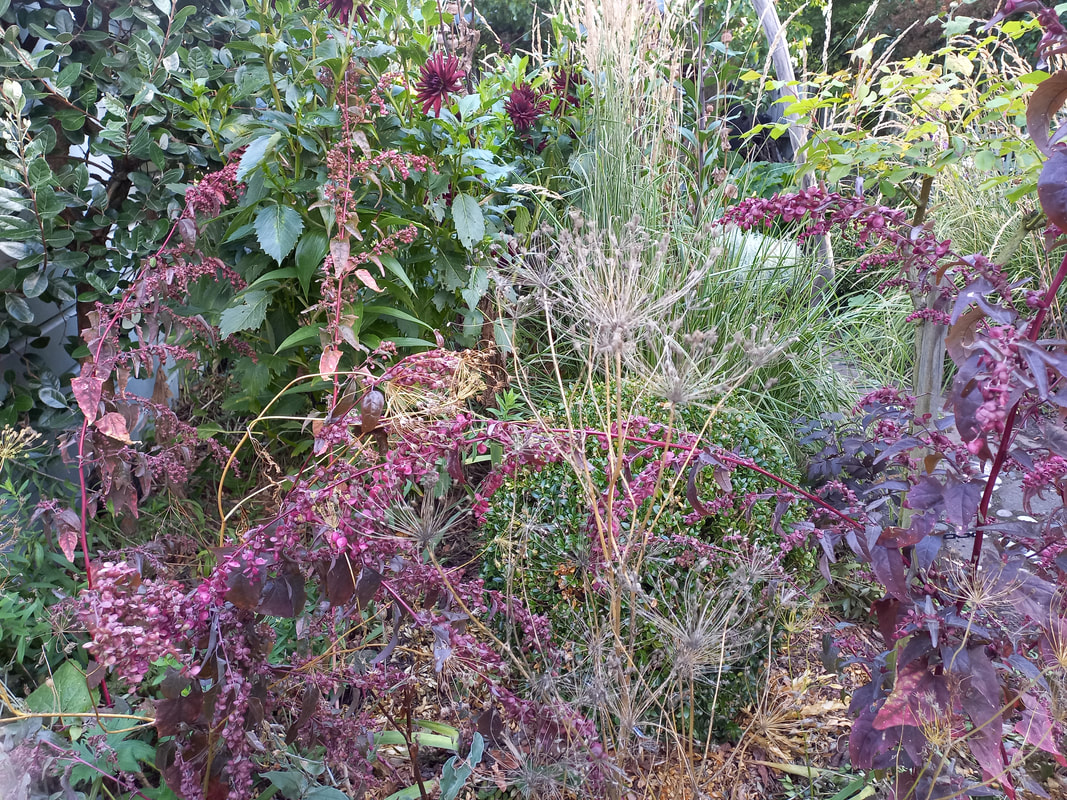
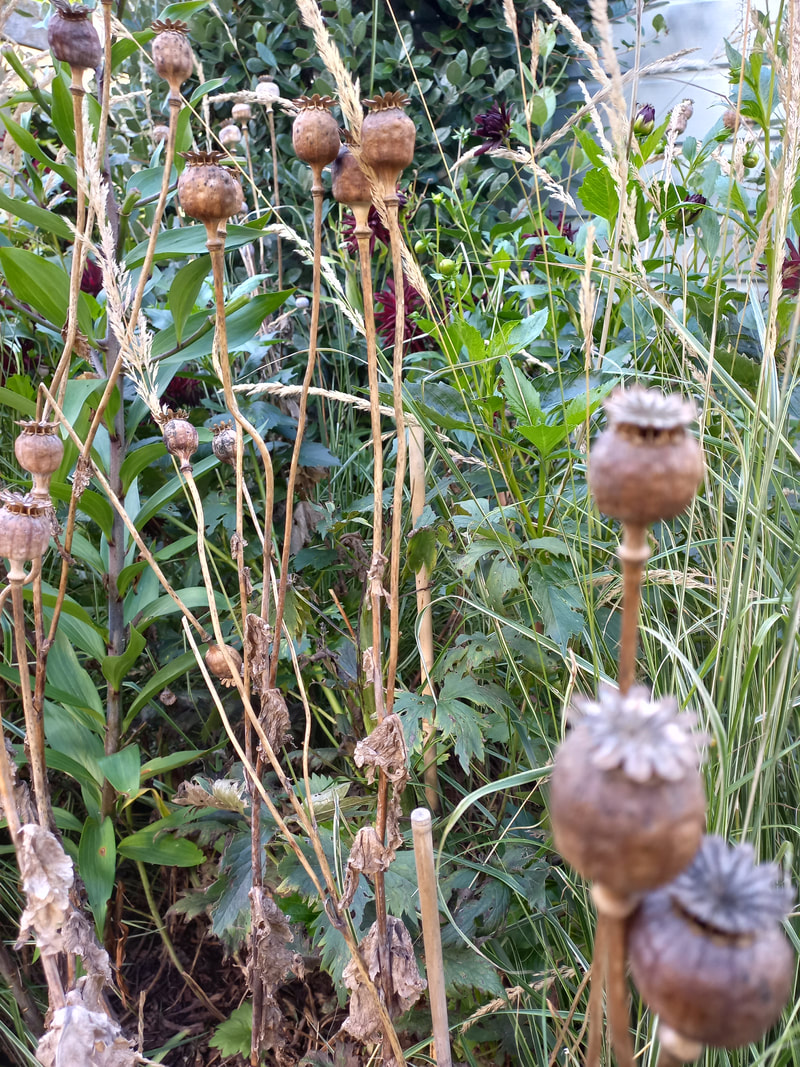
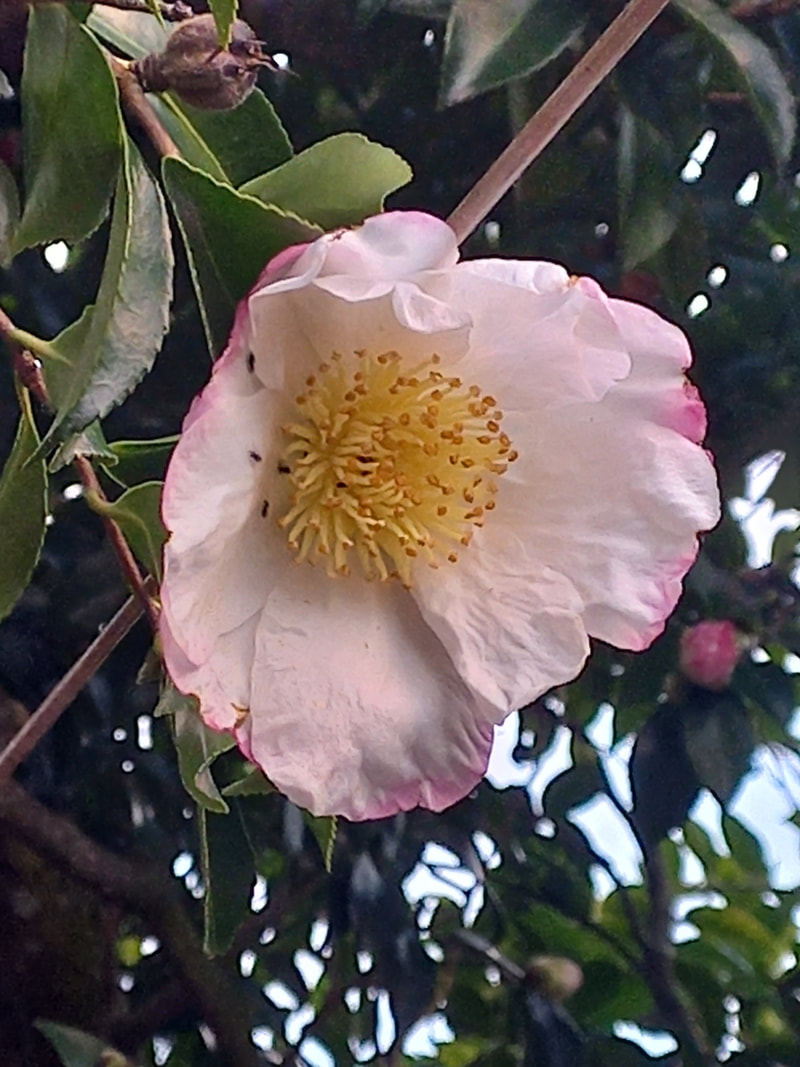
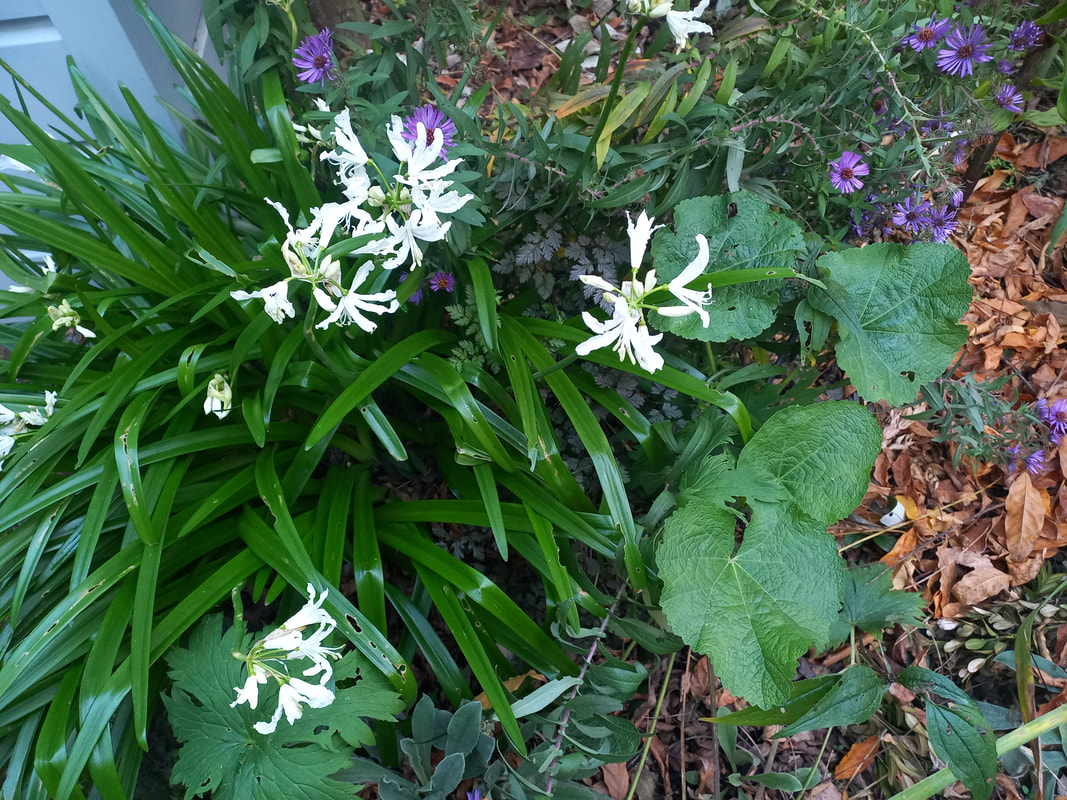
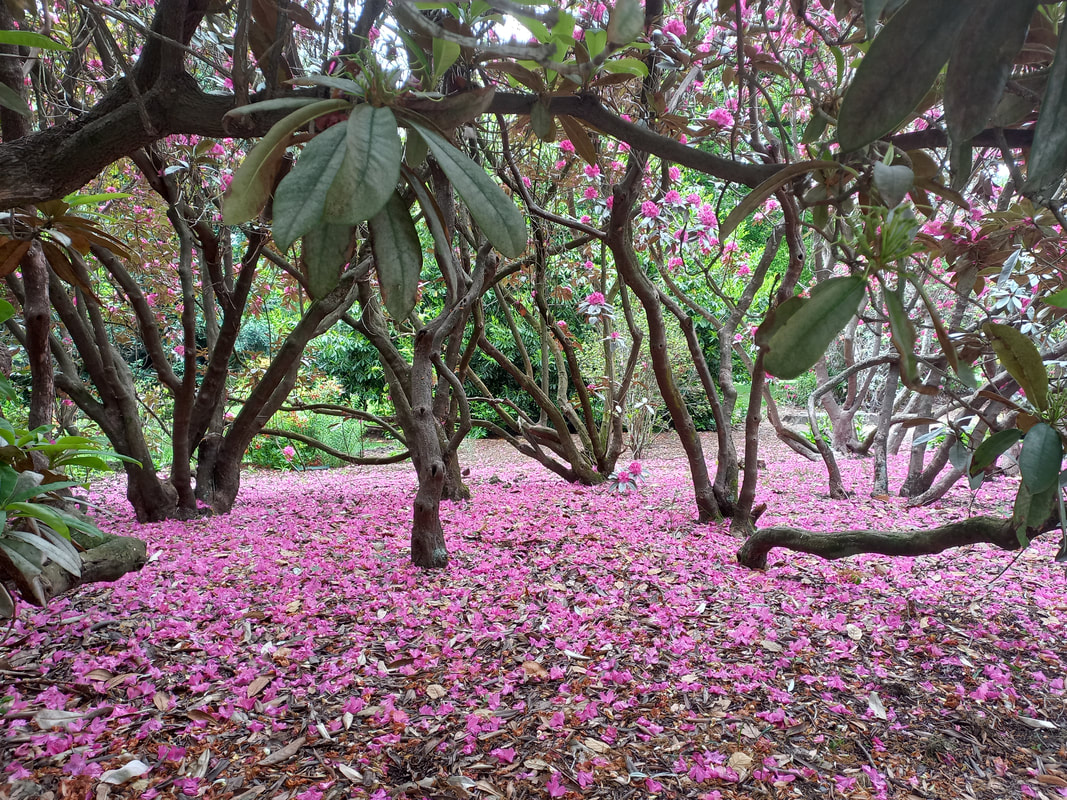
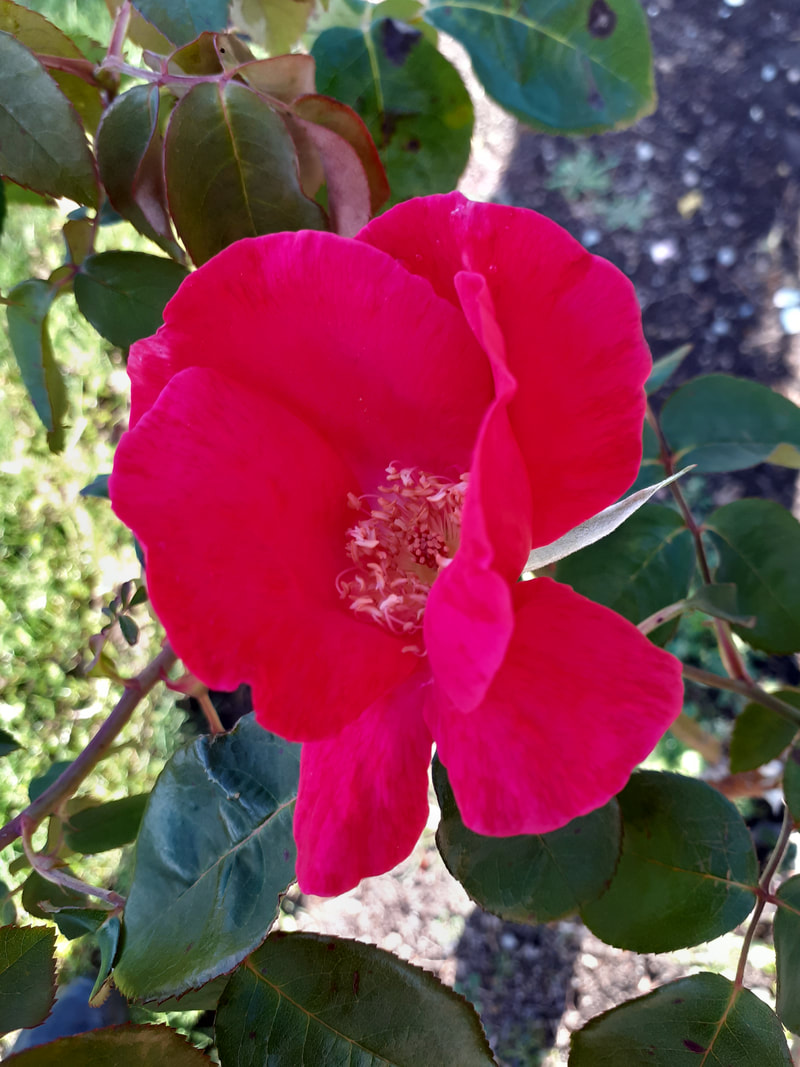
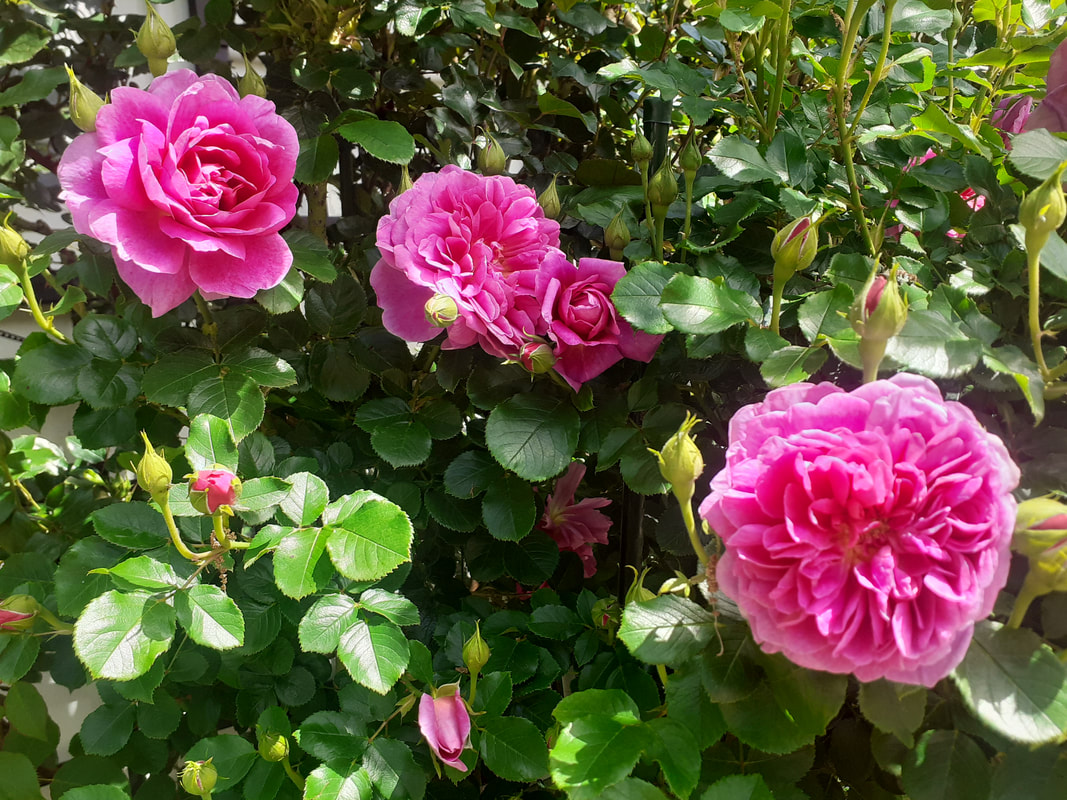
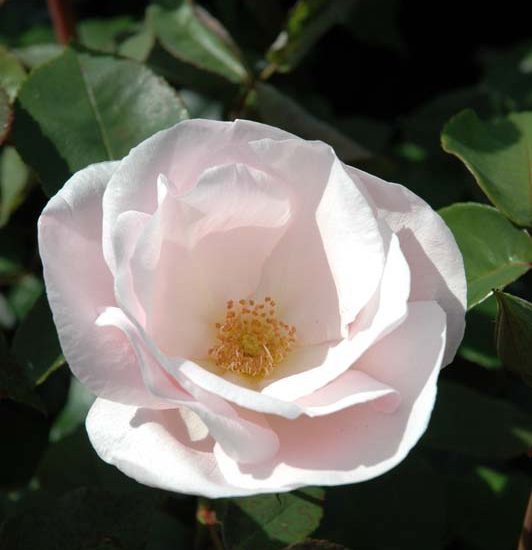
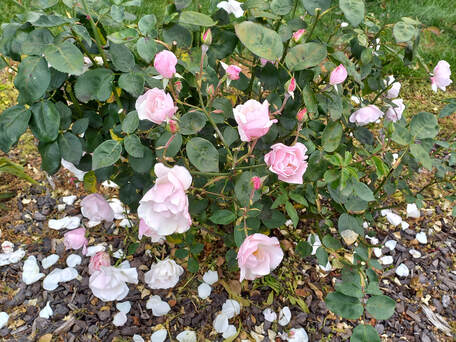

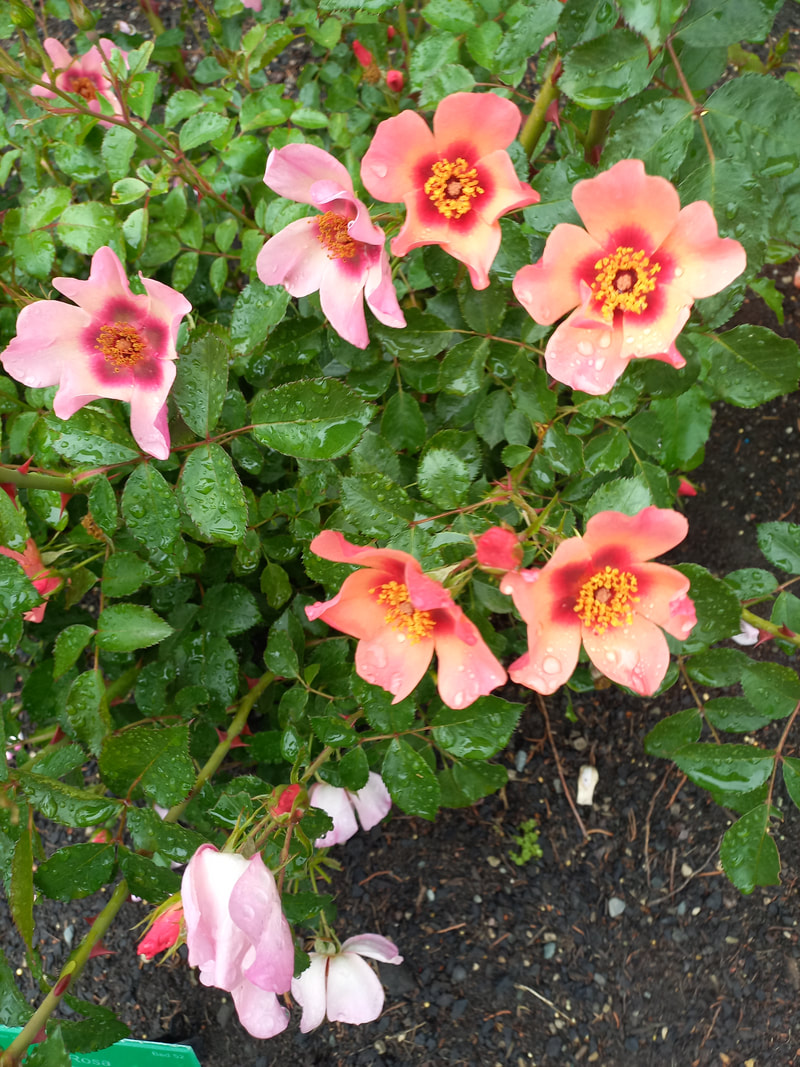
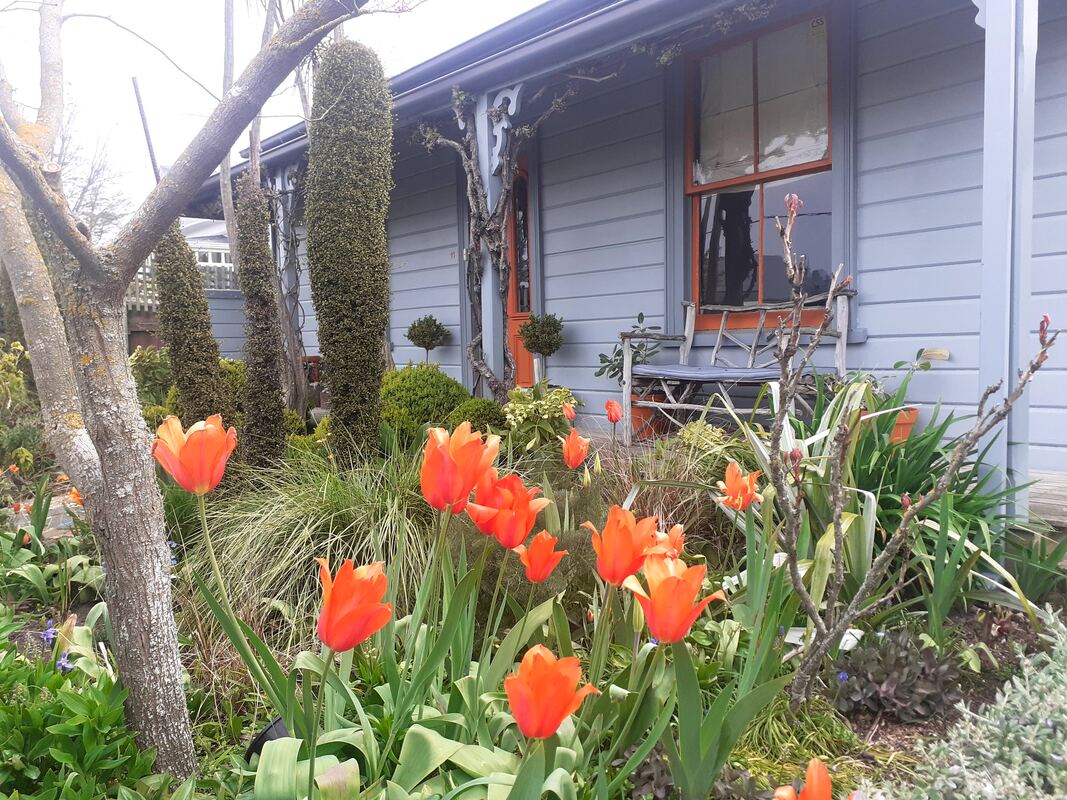

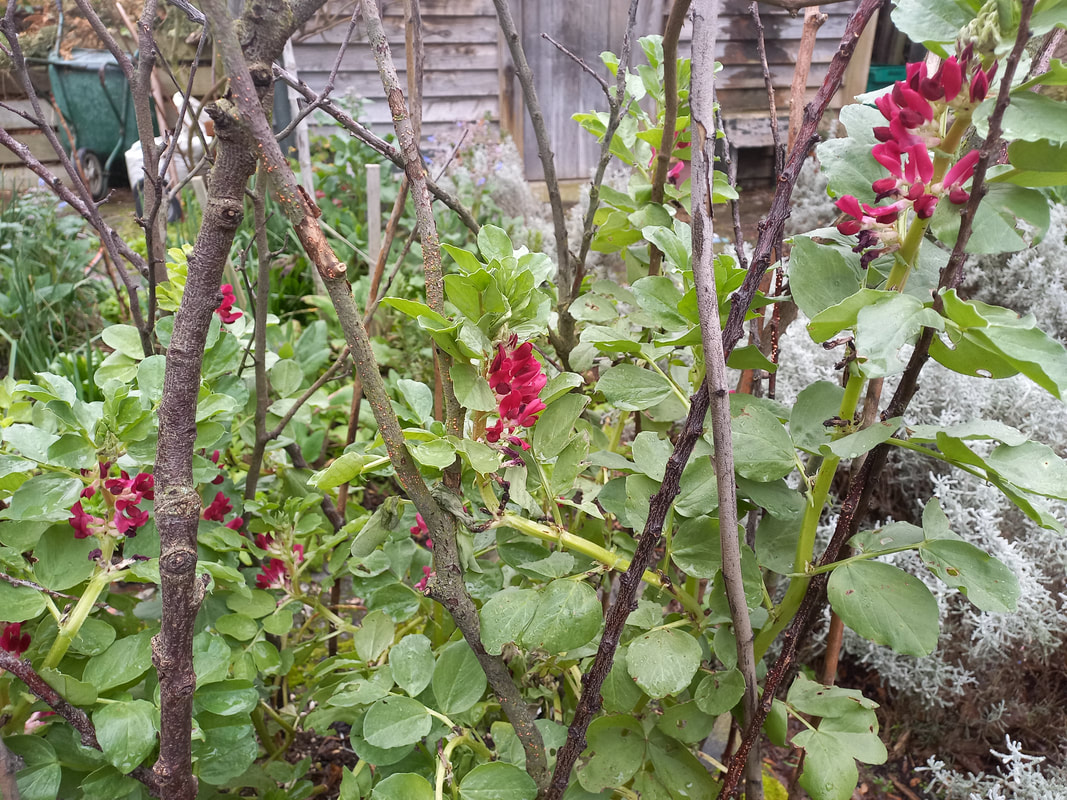

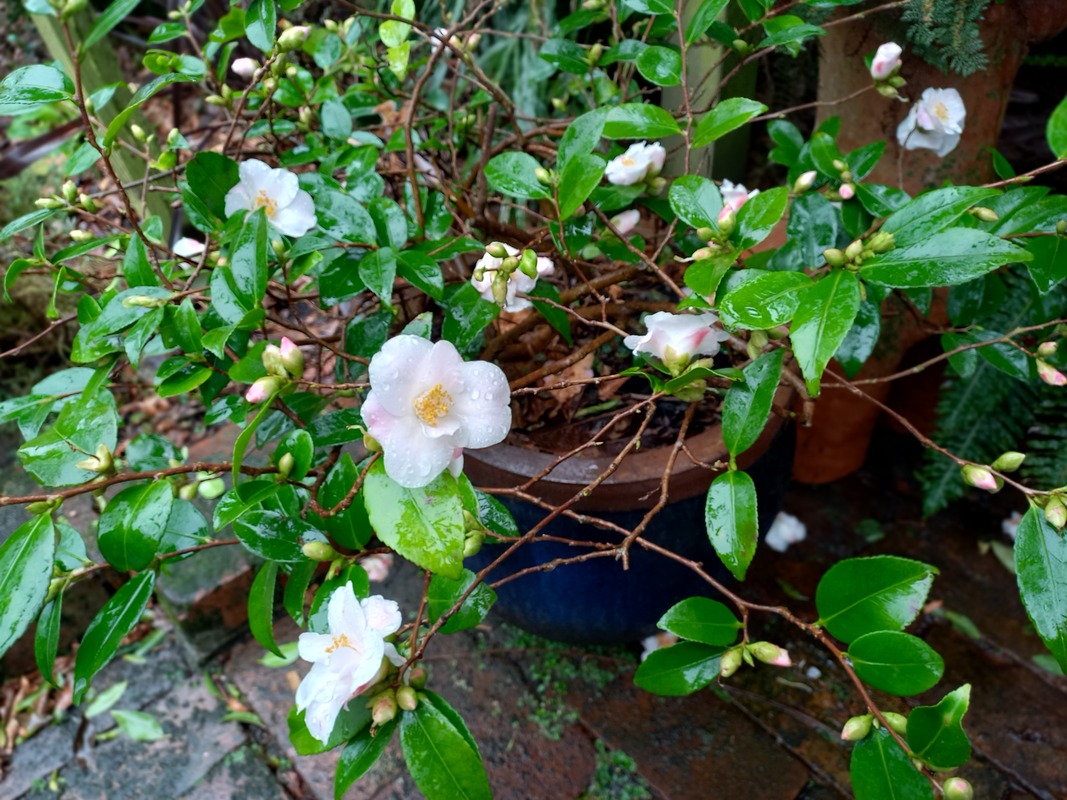
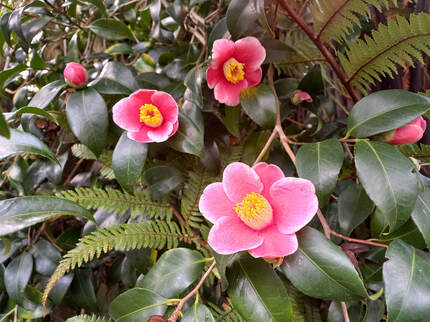
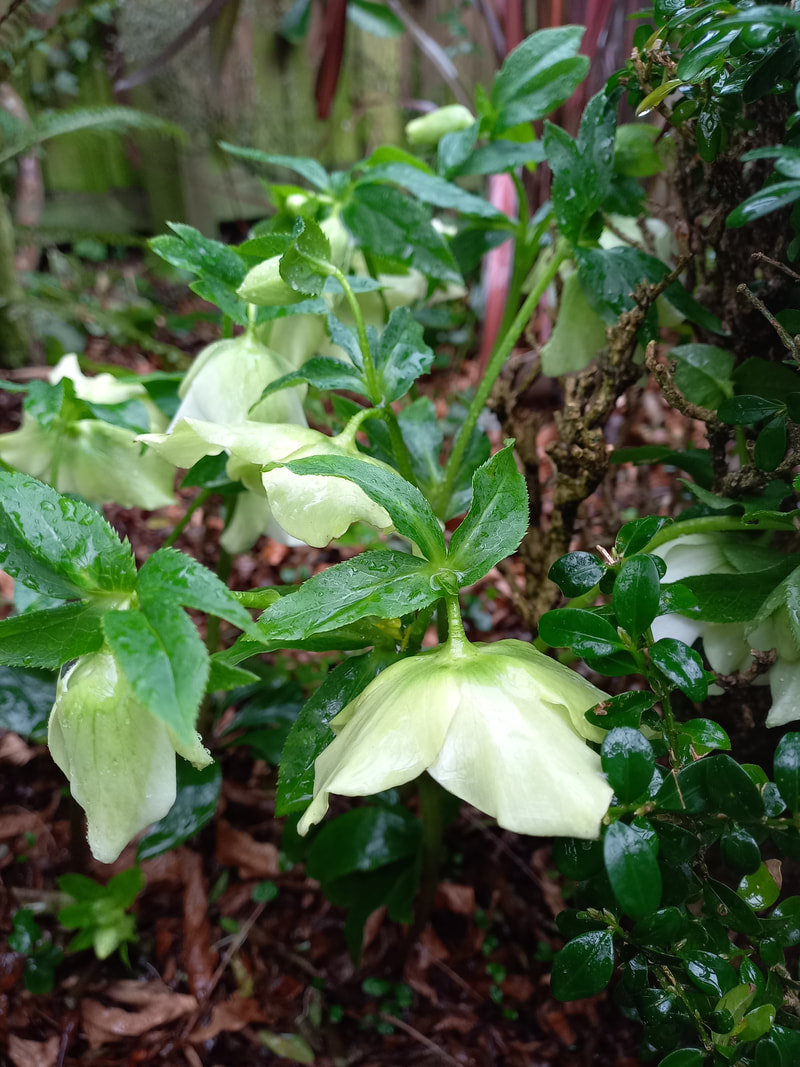
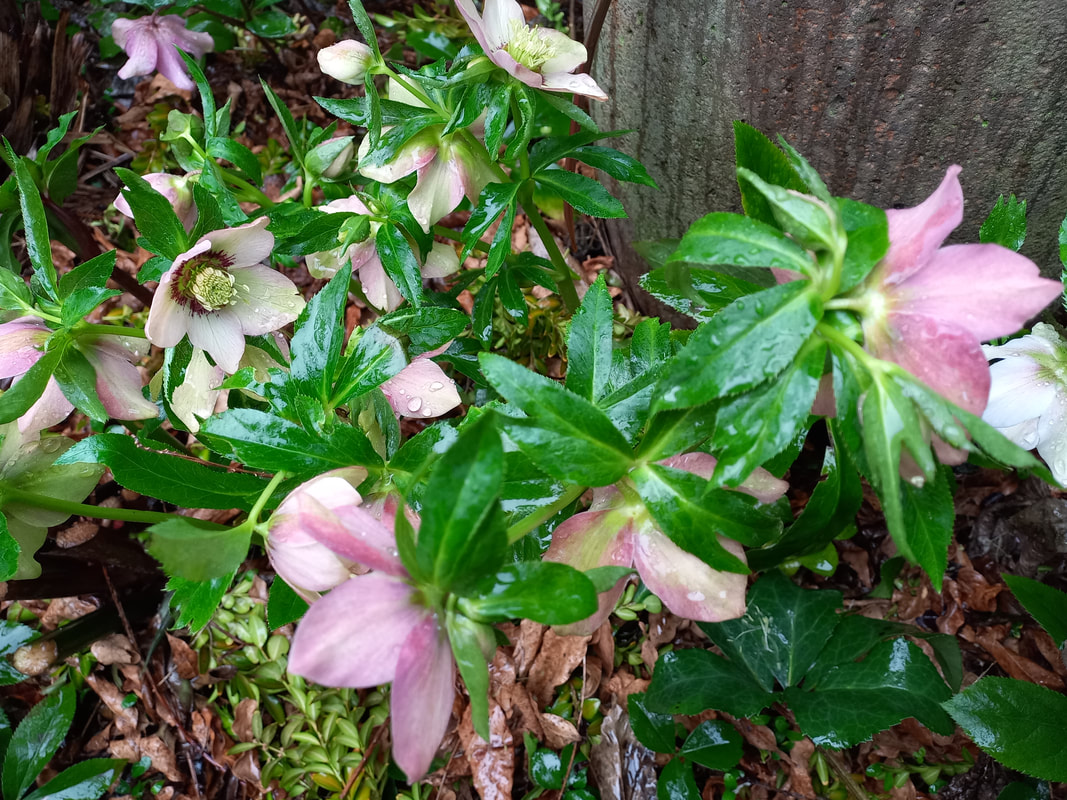
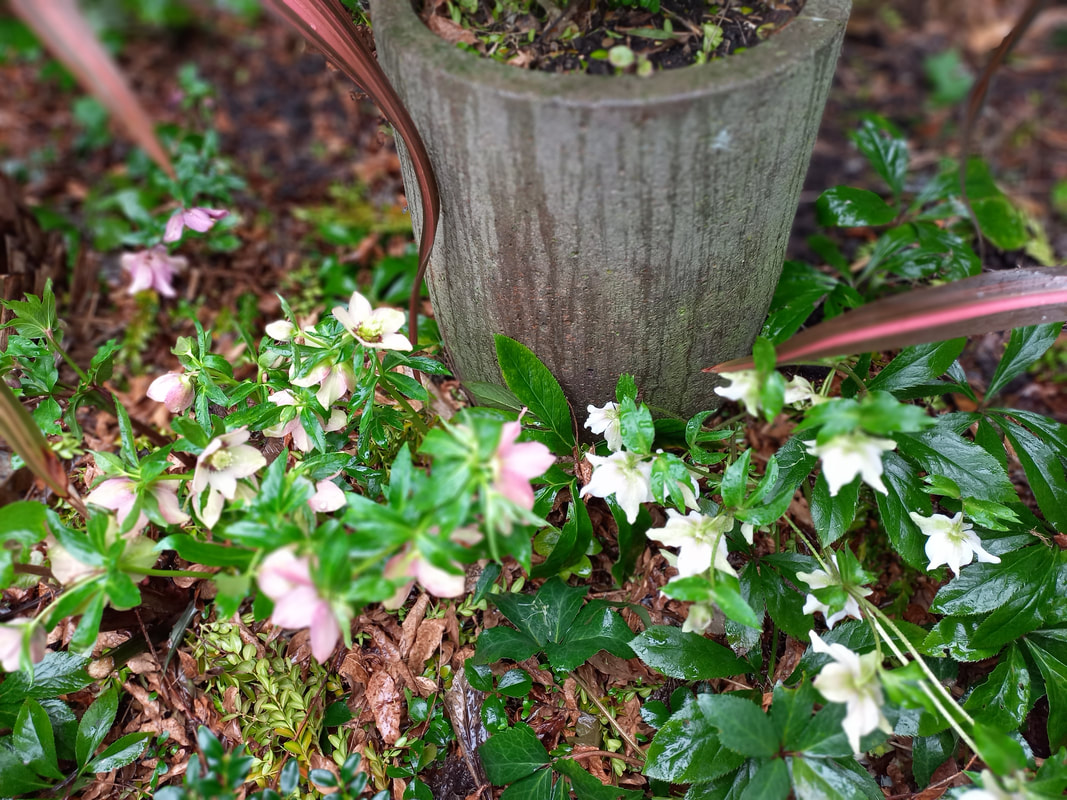
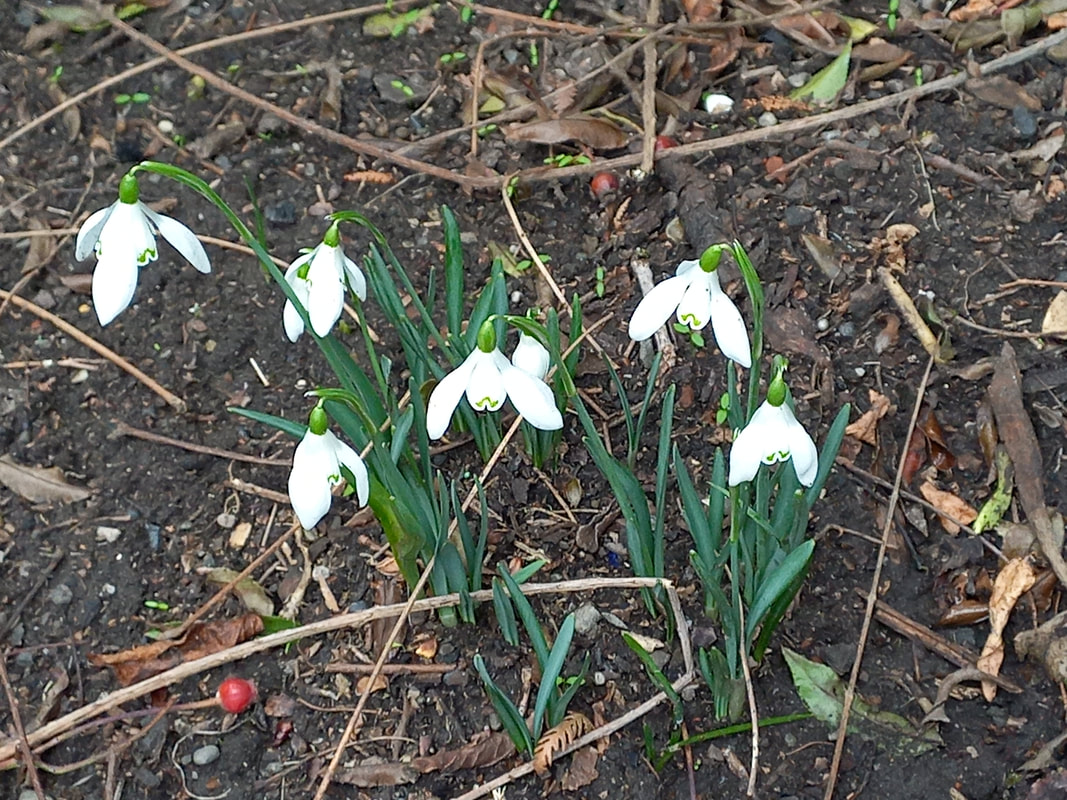
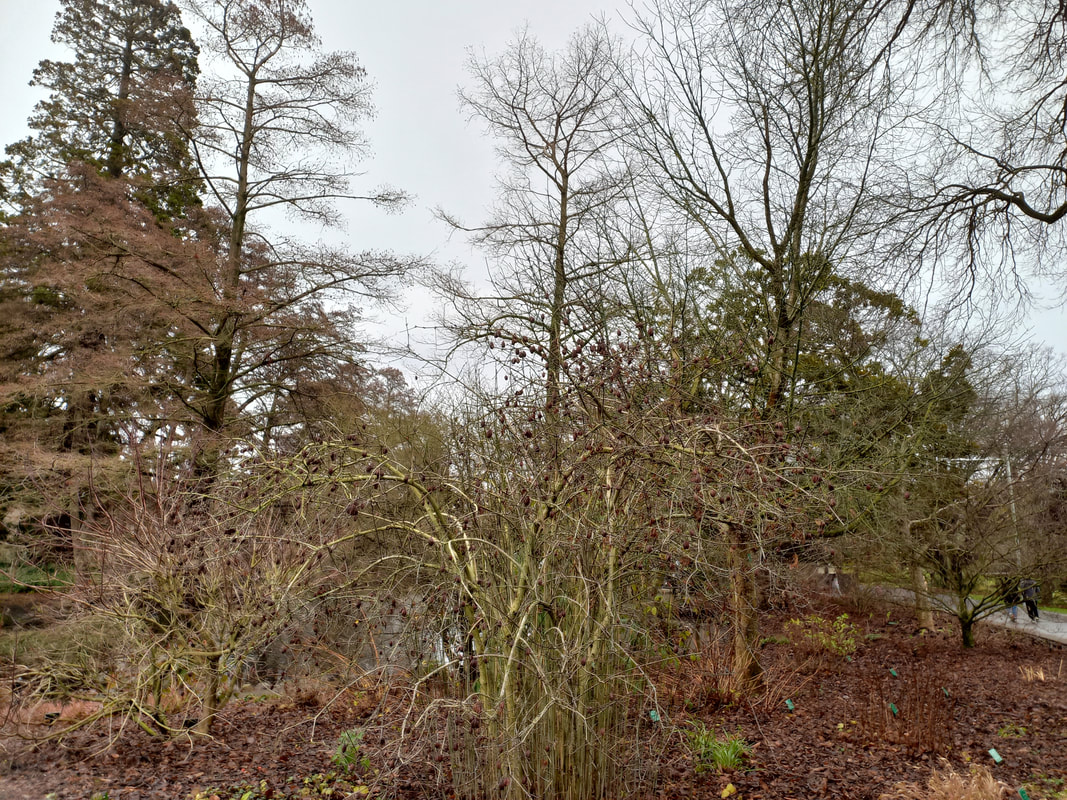
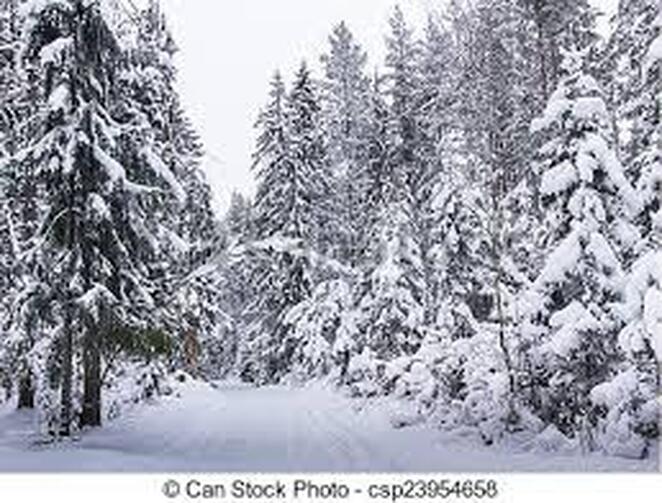
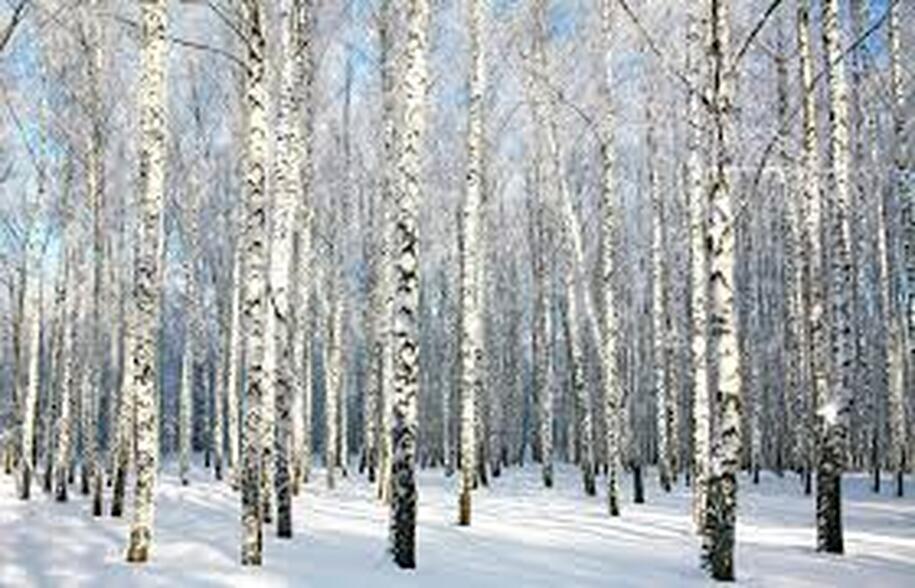
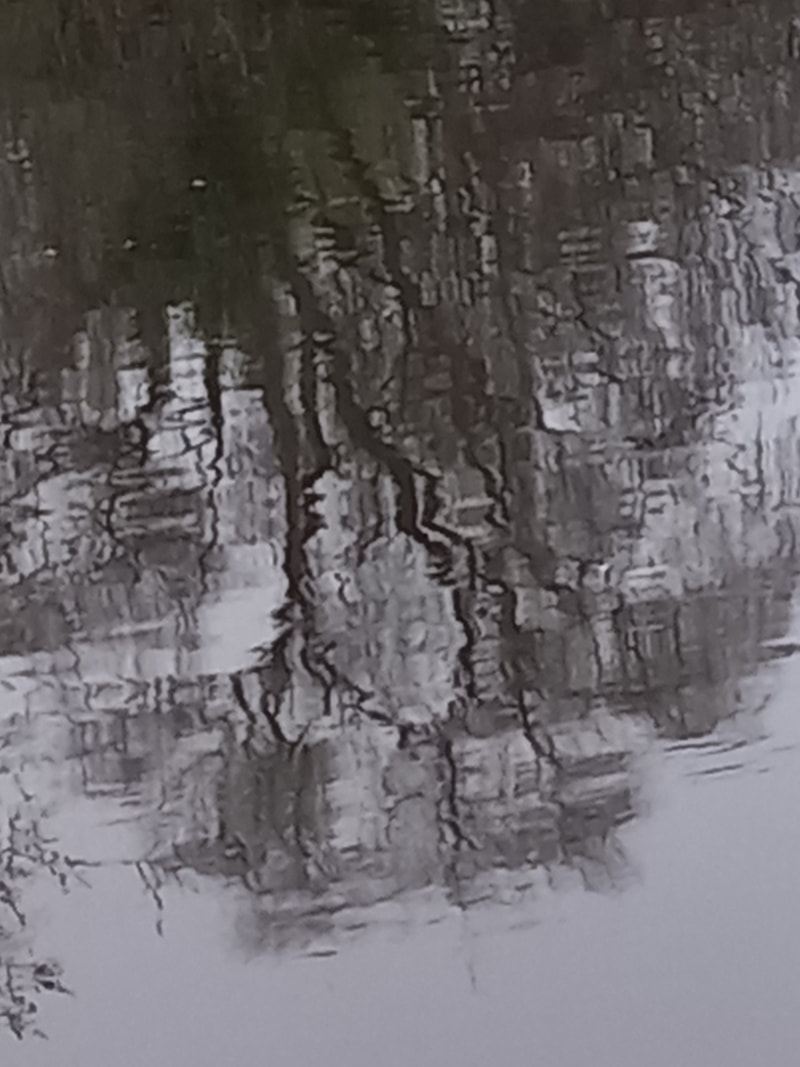
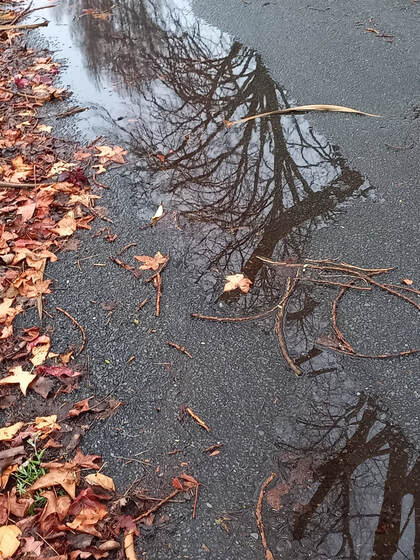
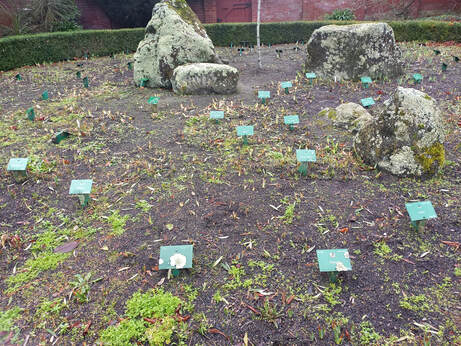
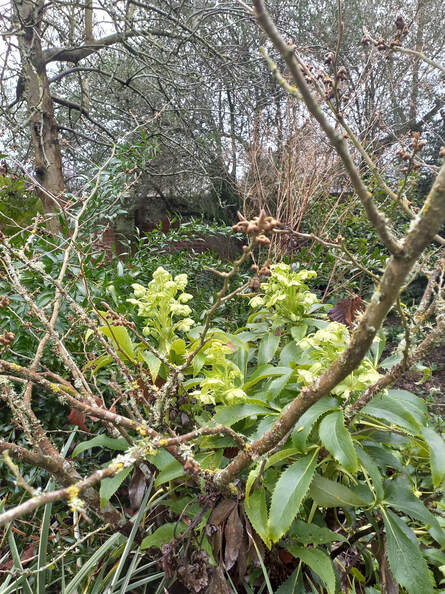
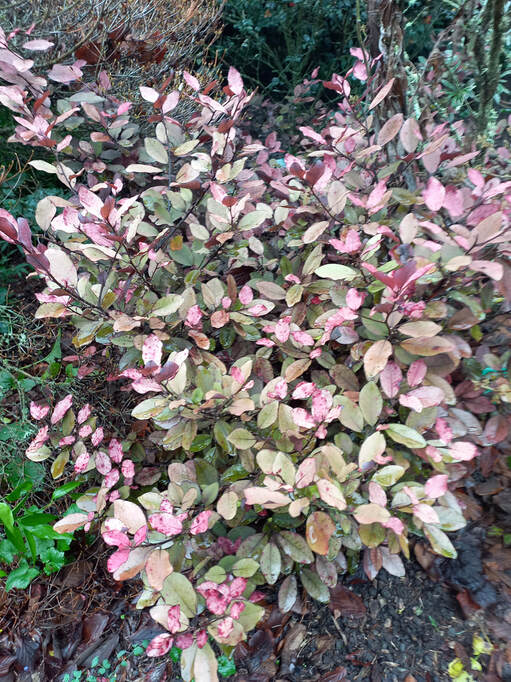
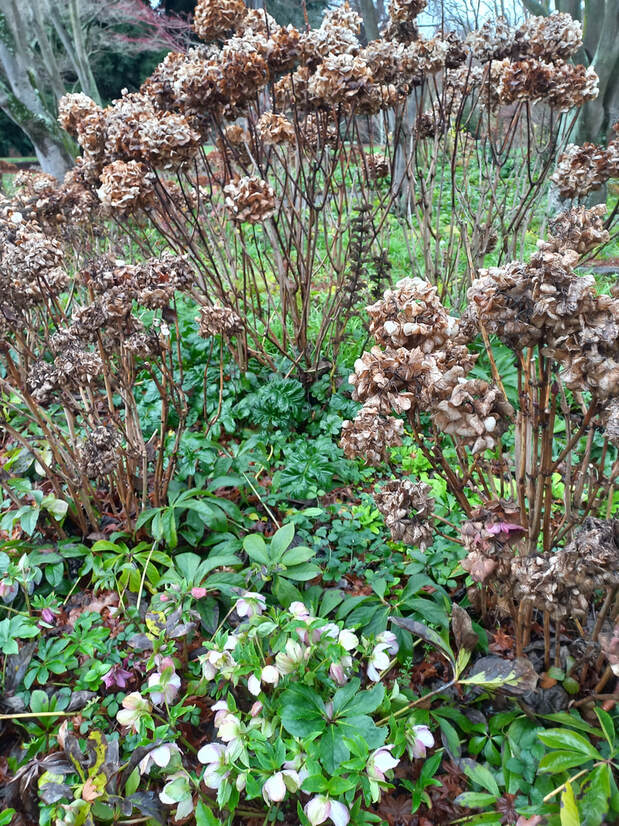
 RSS Feed
RSS Feed
